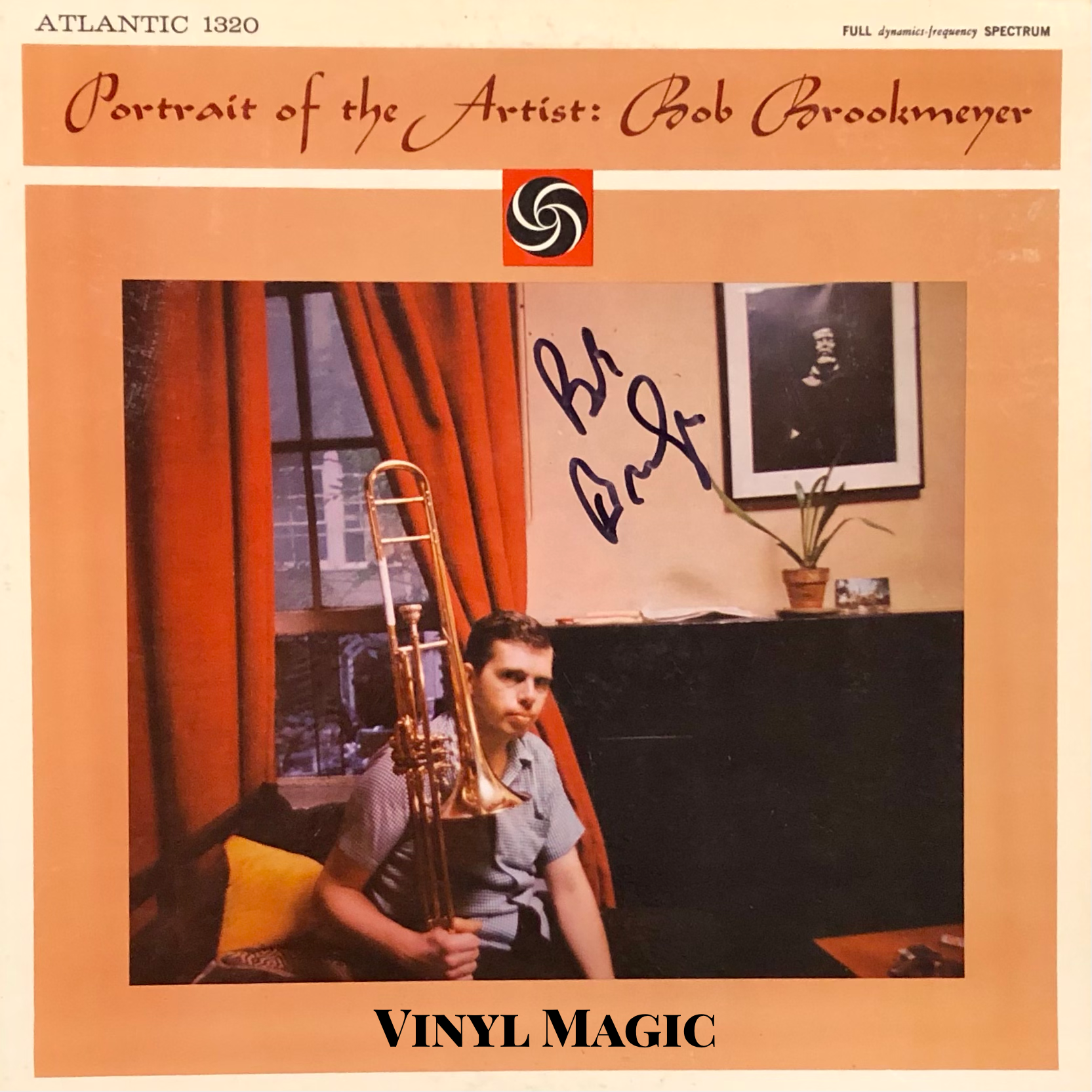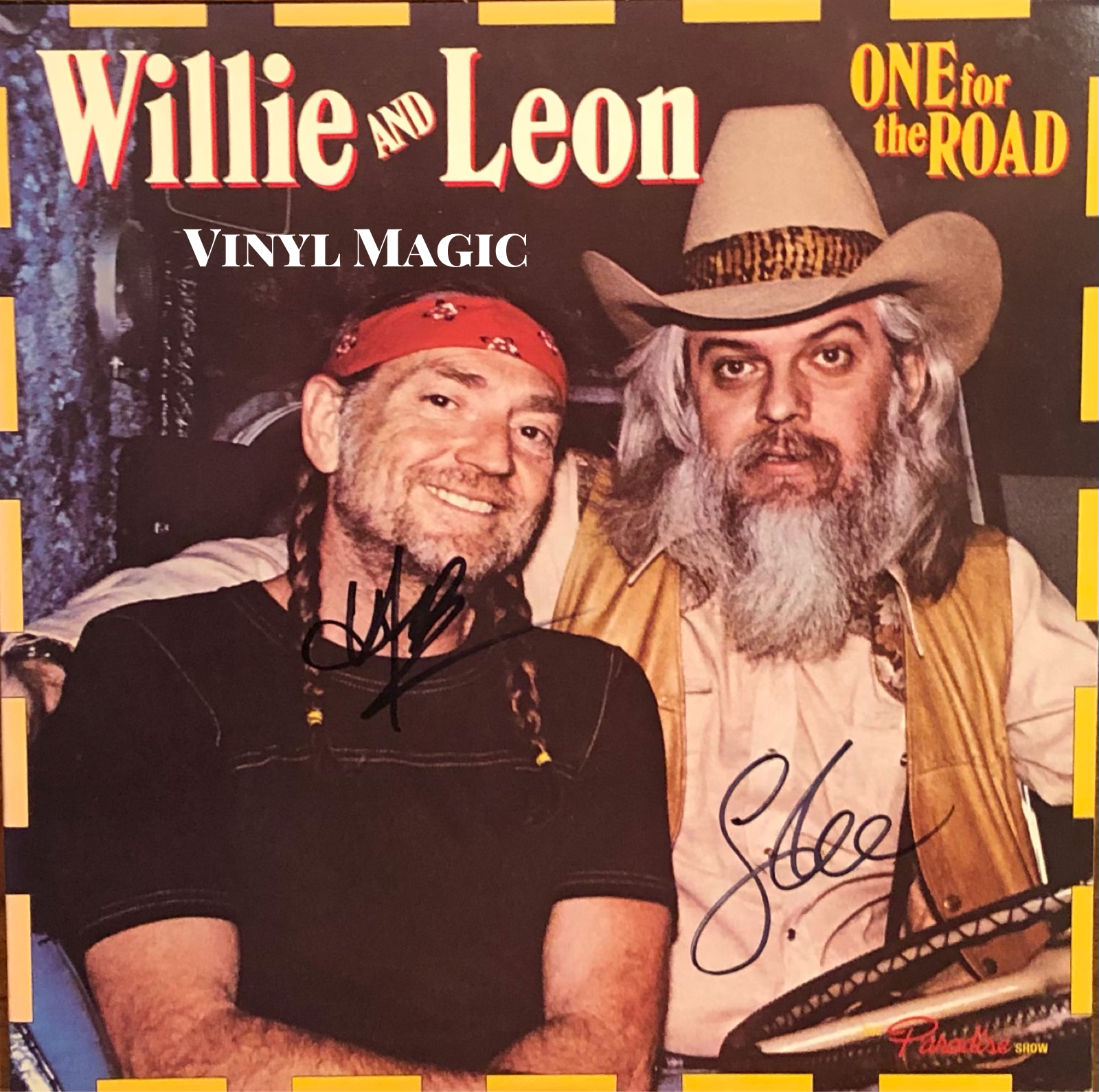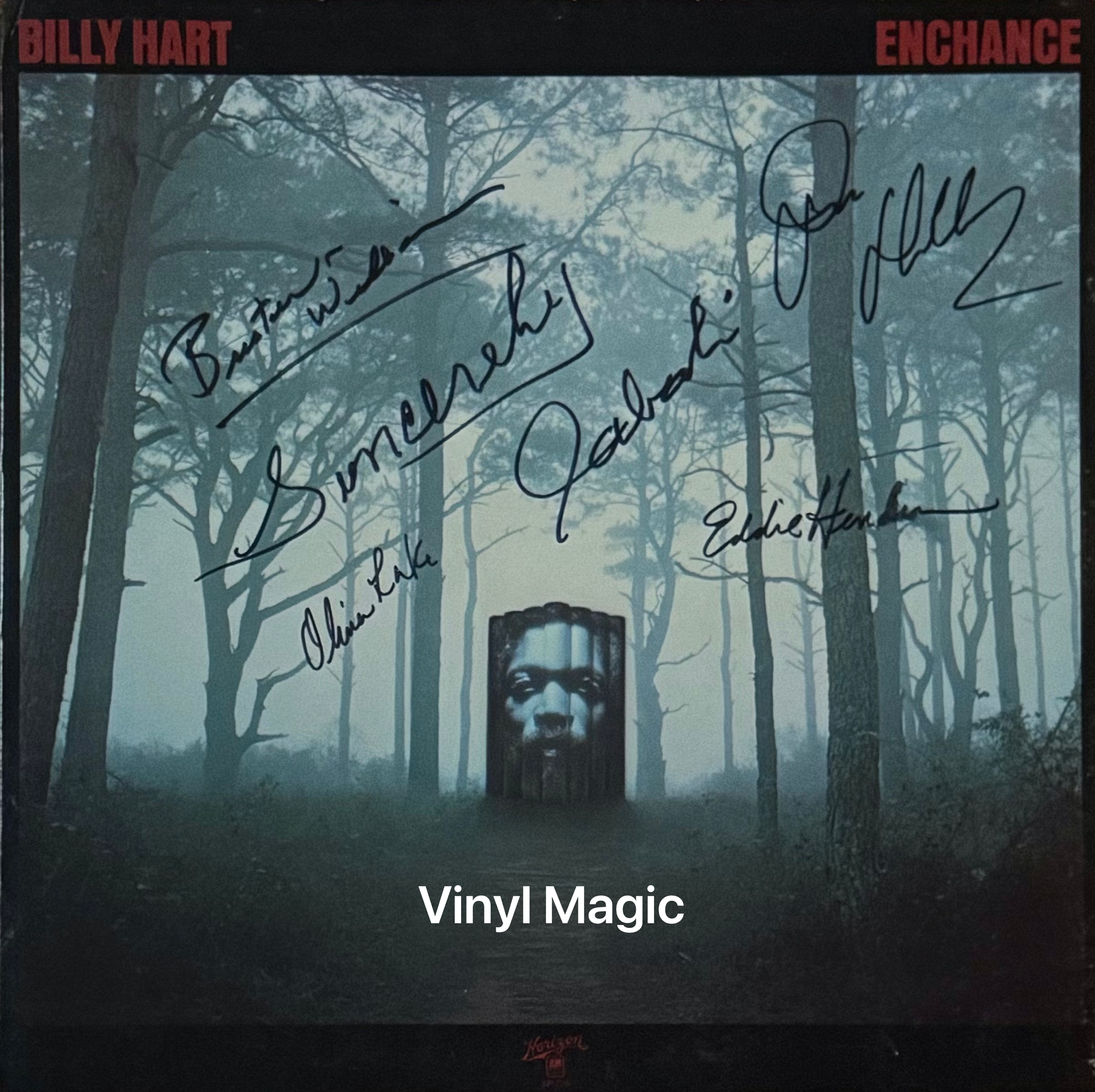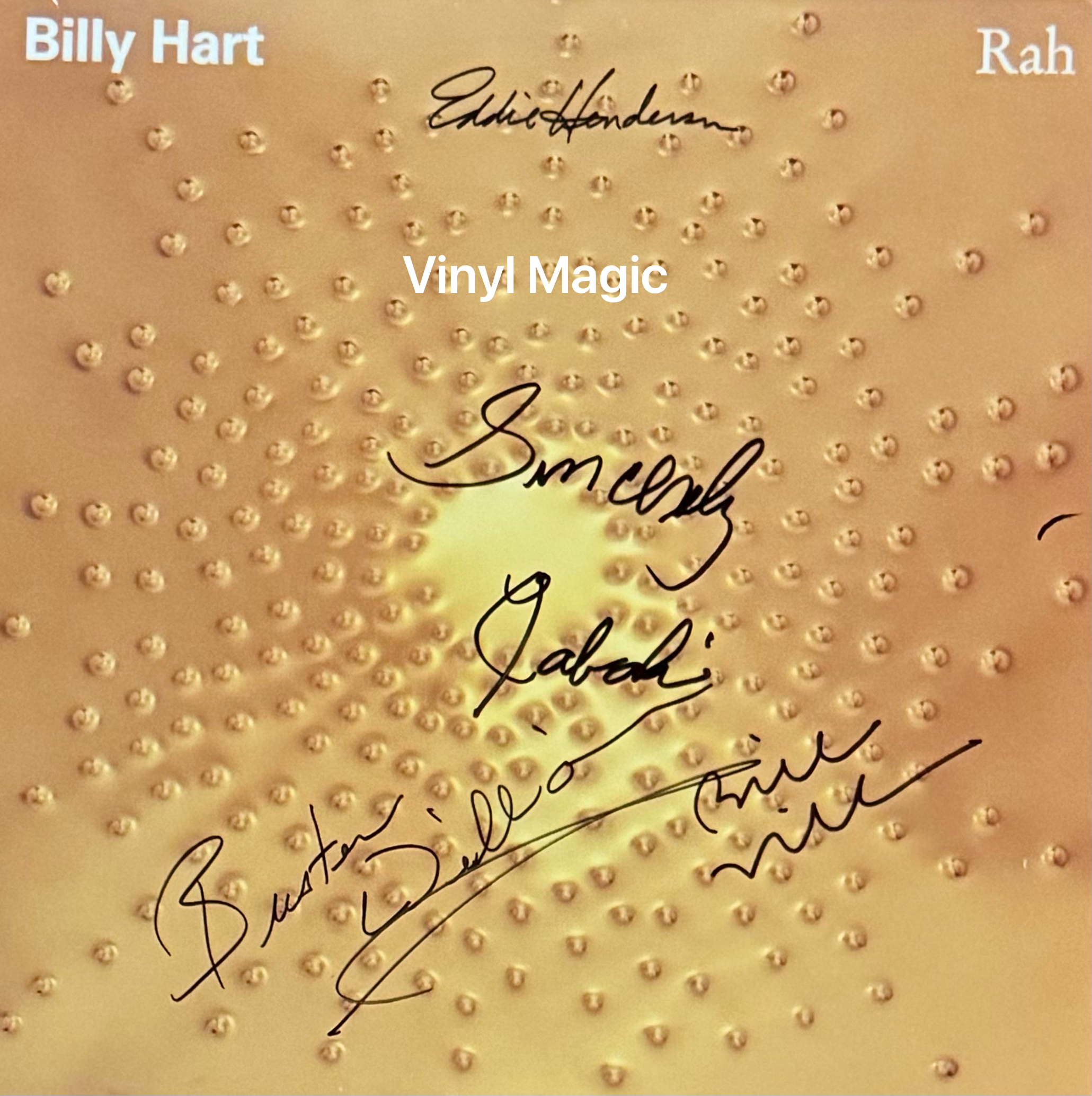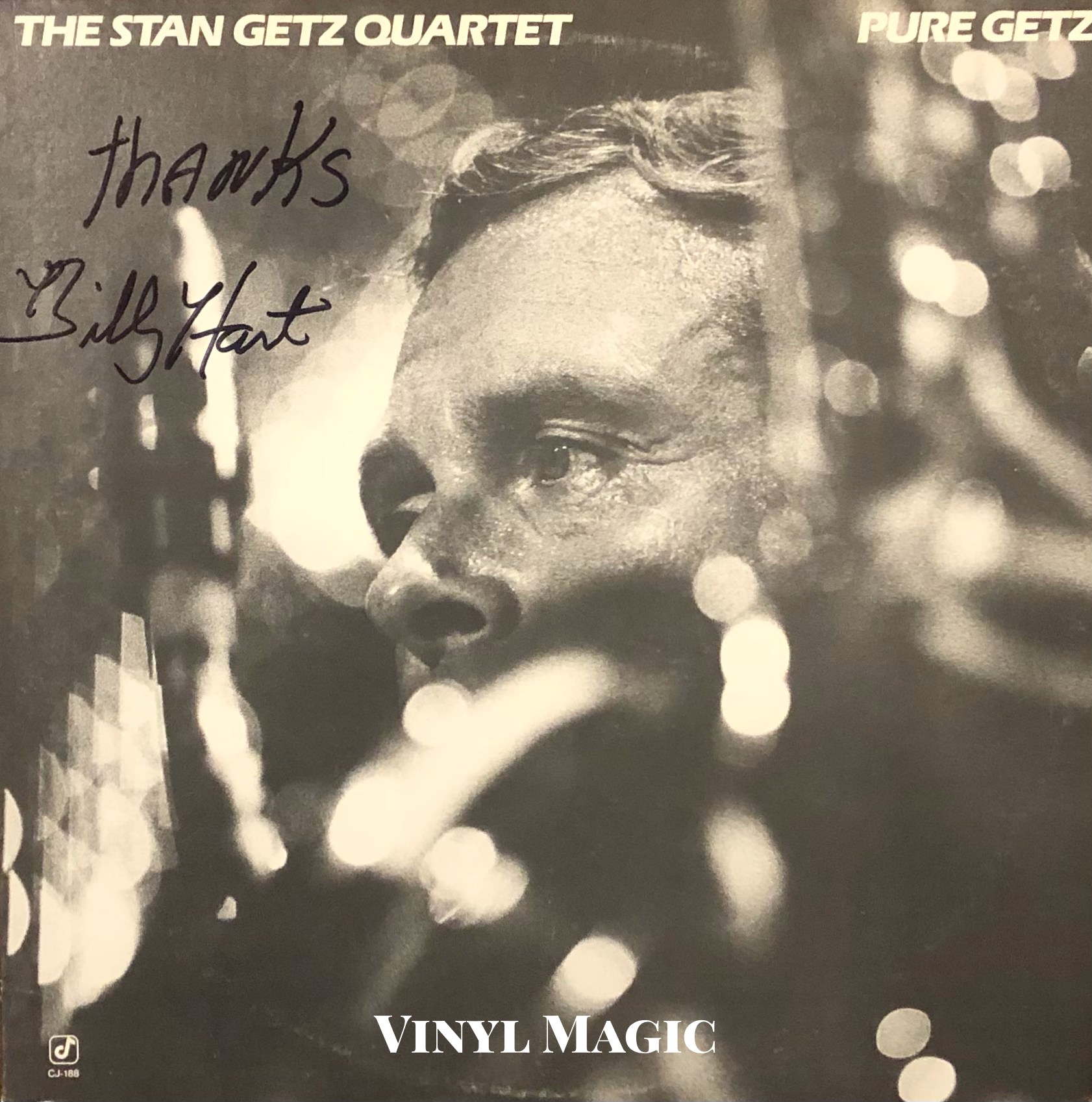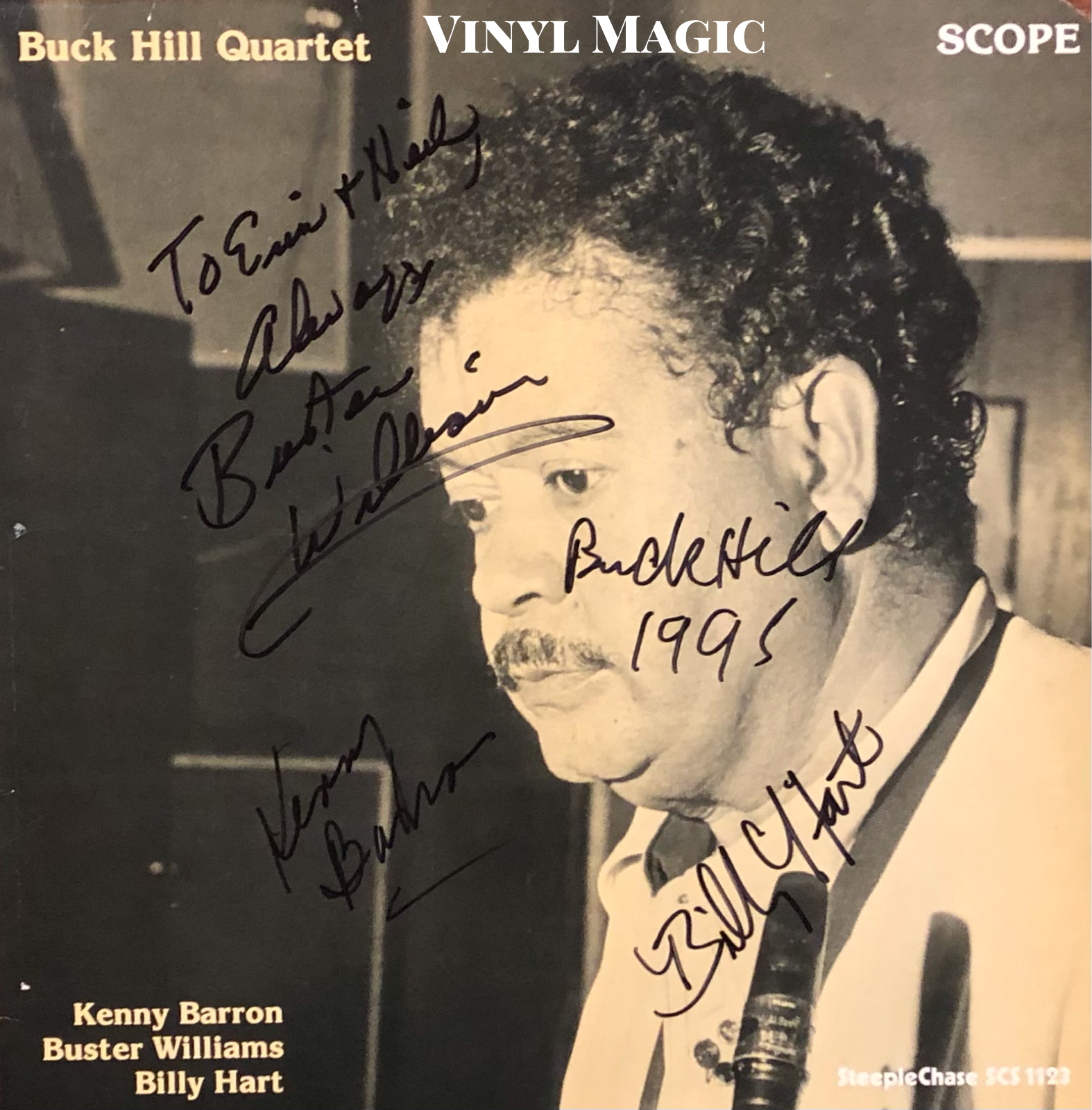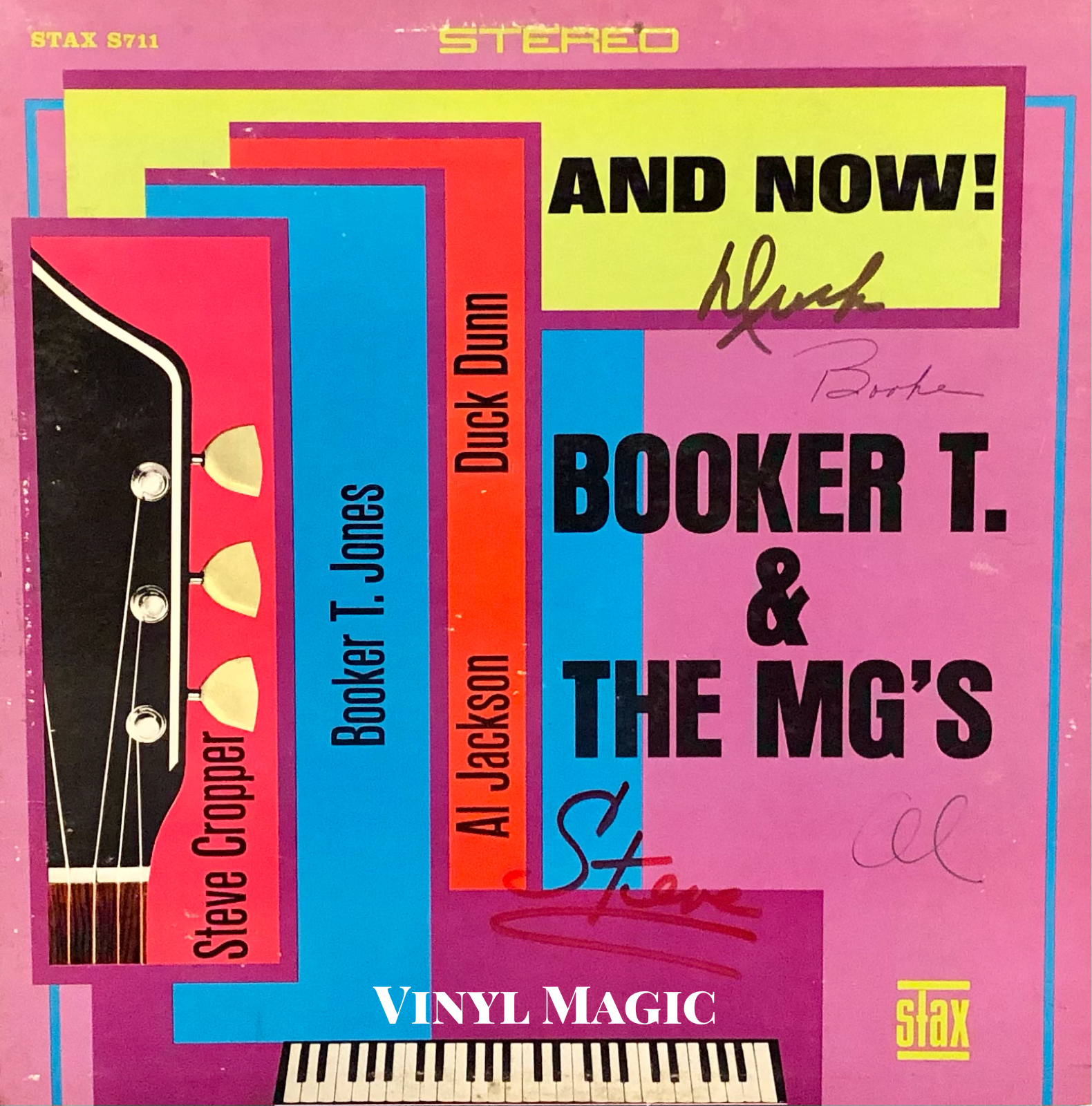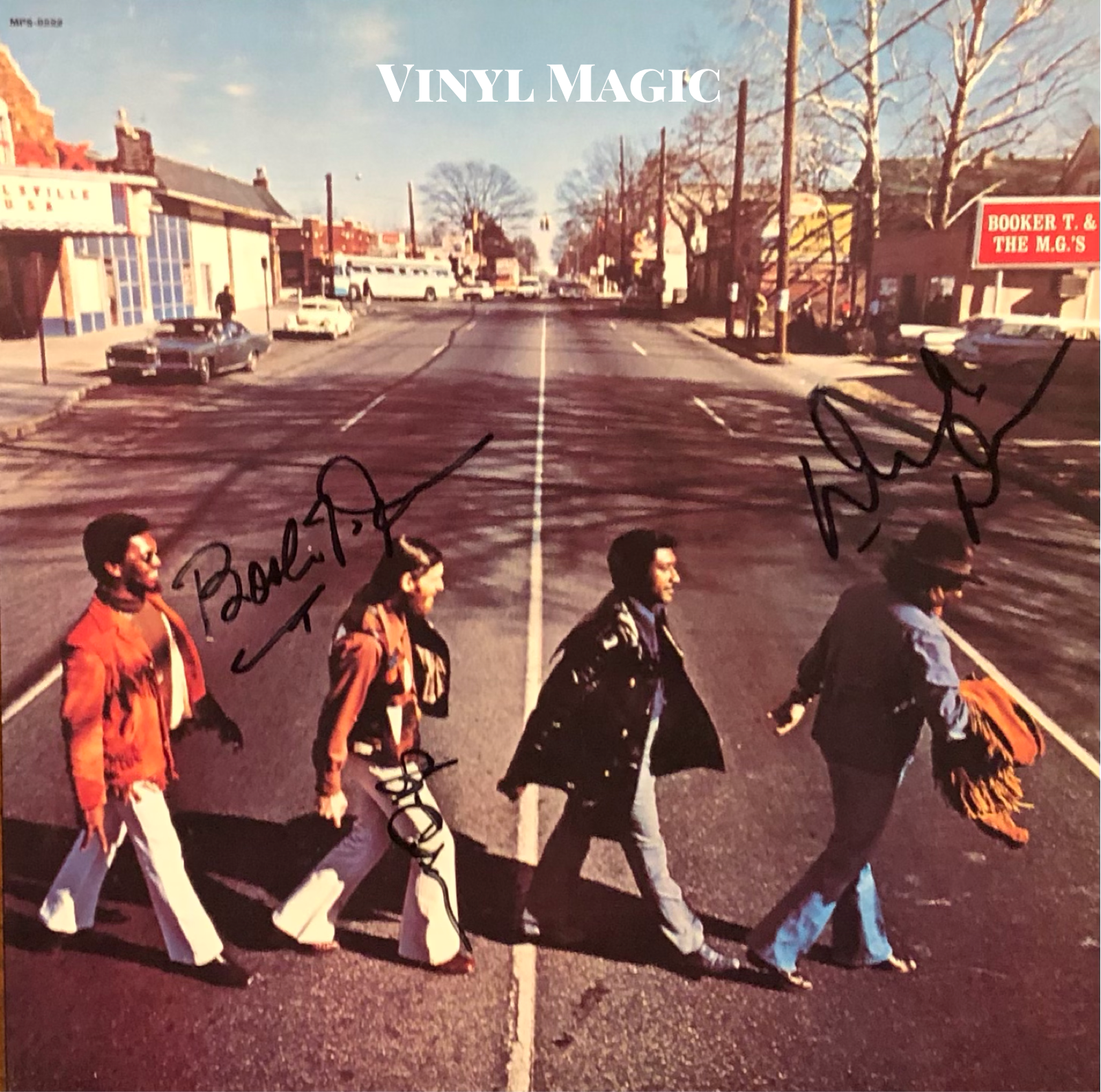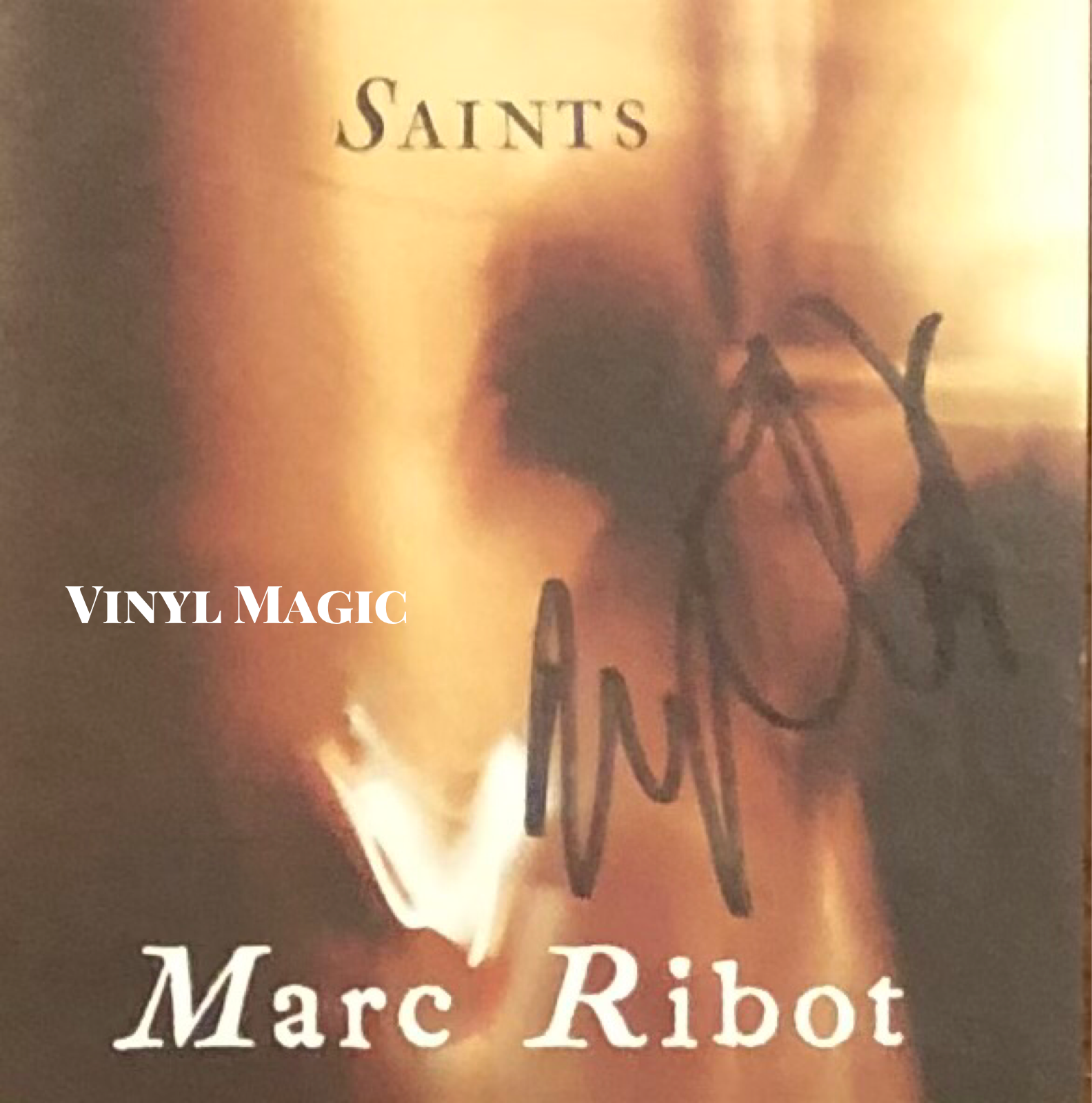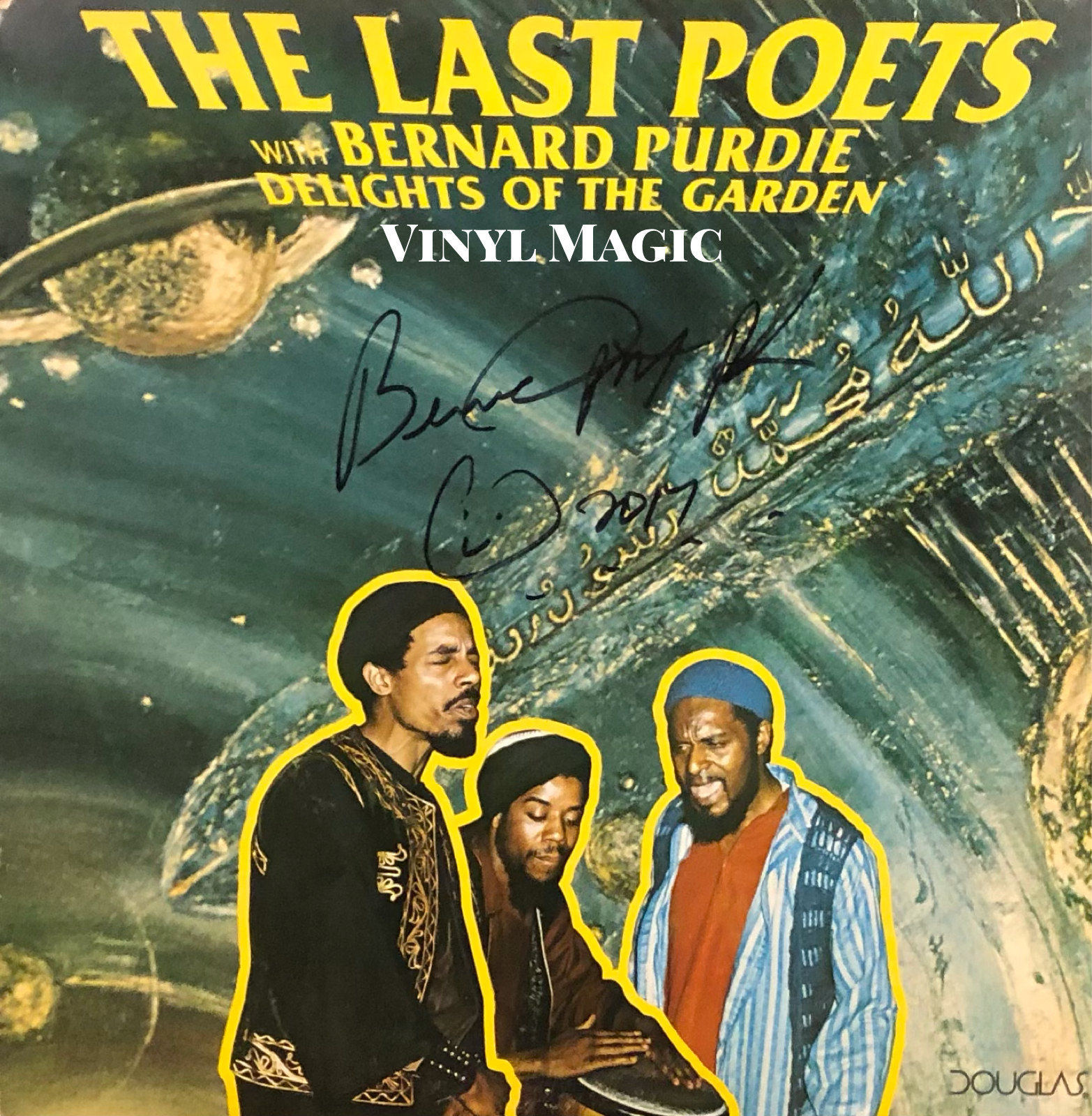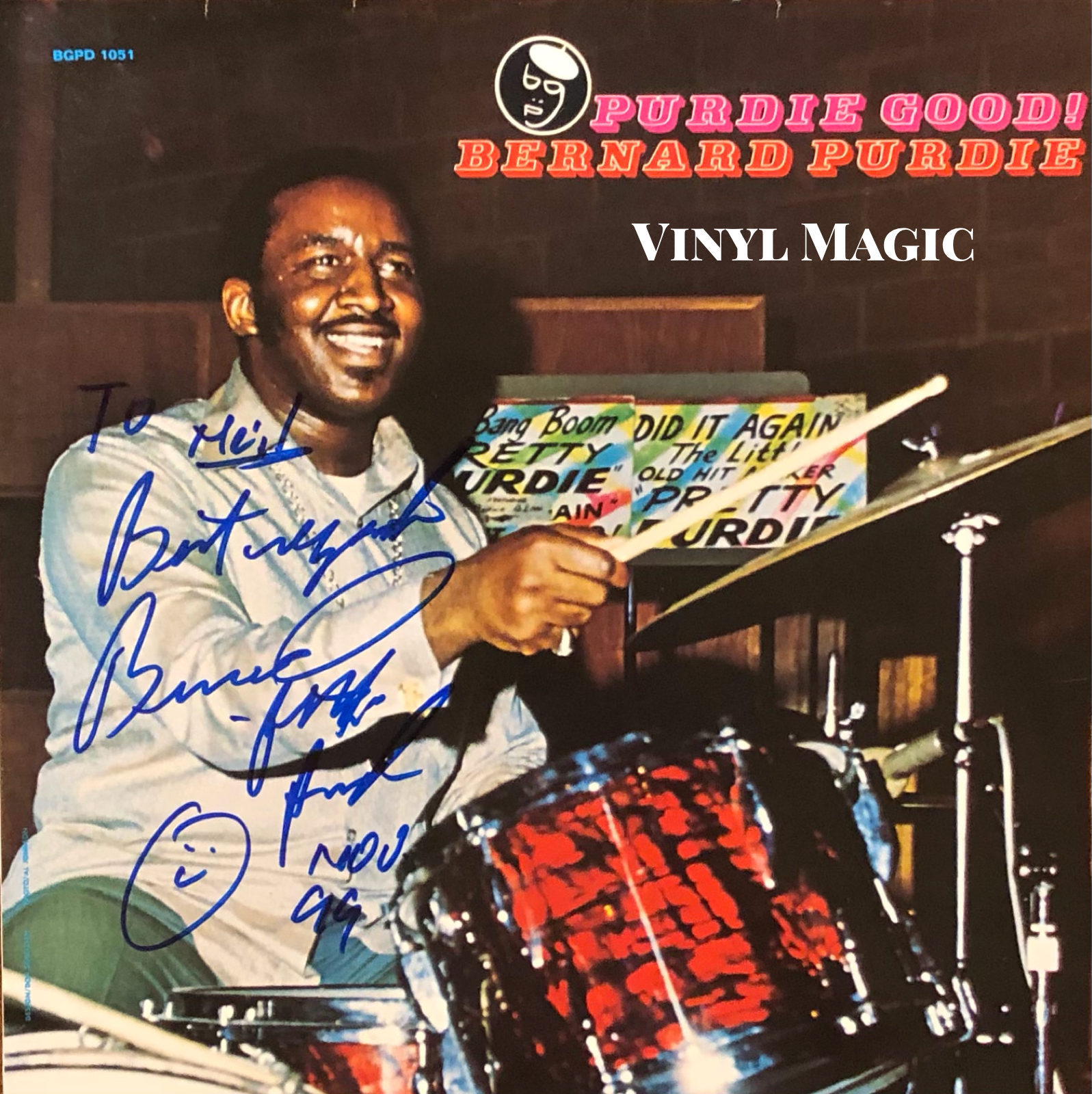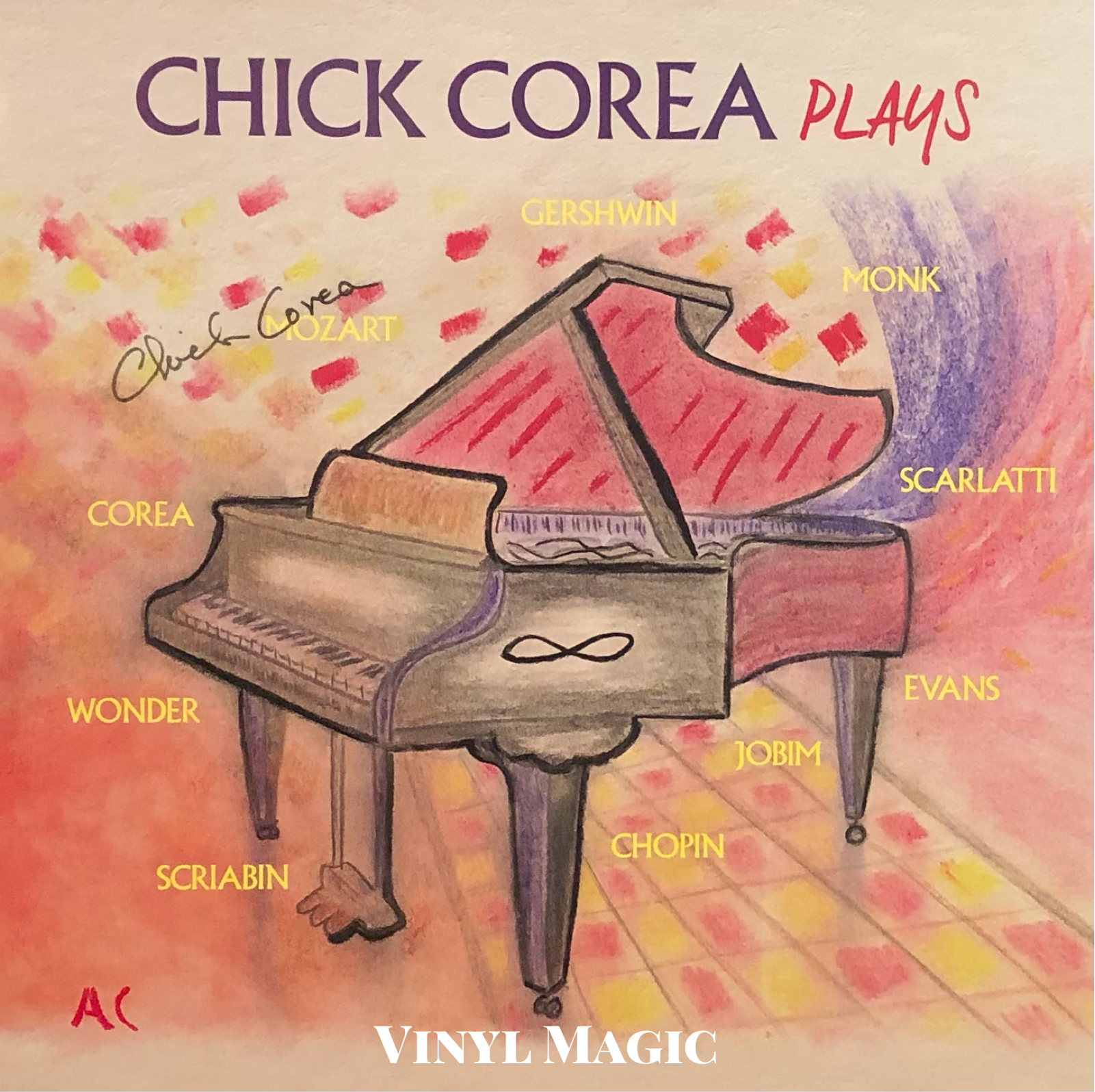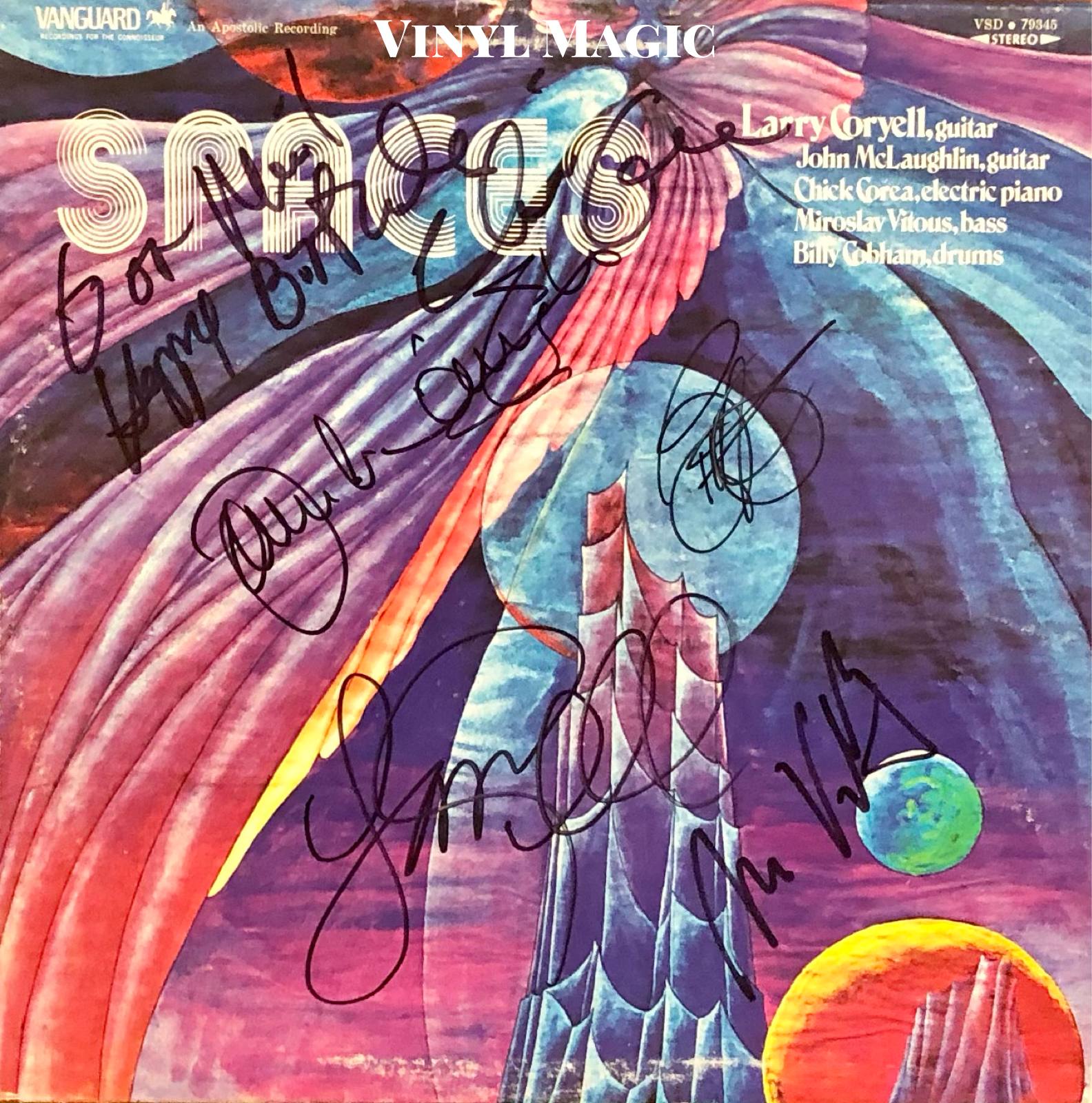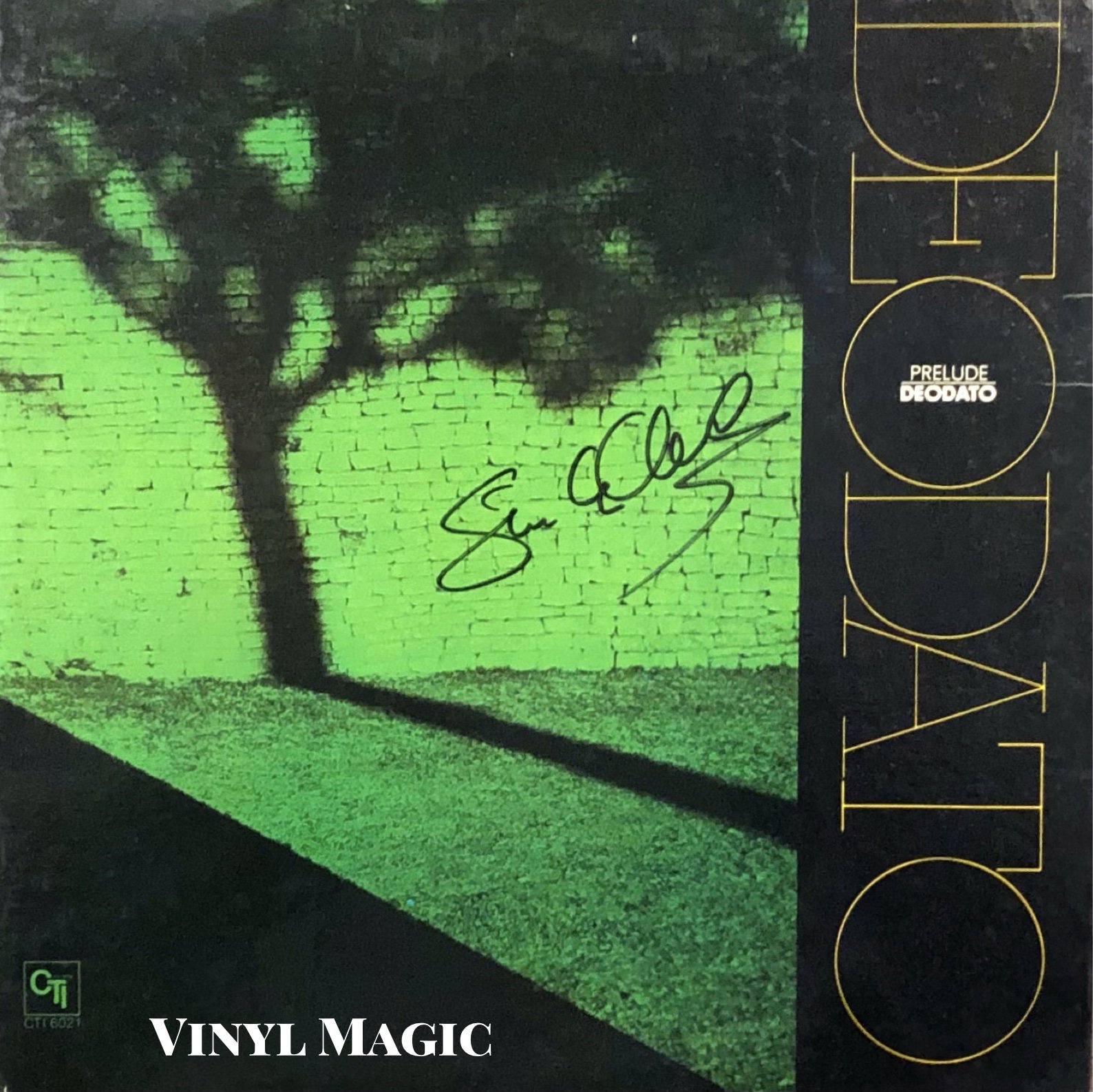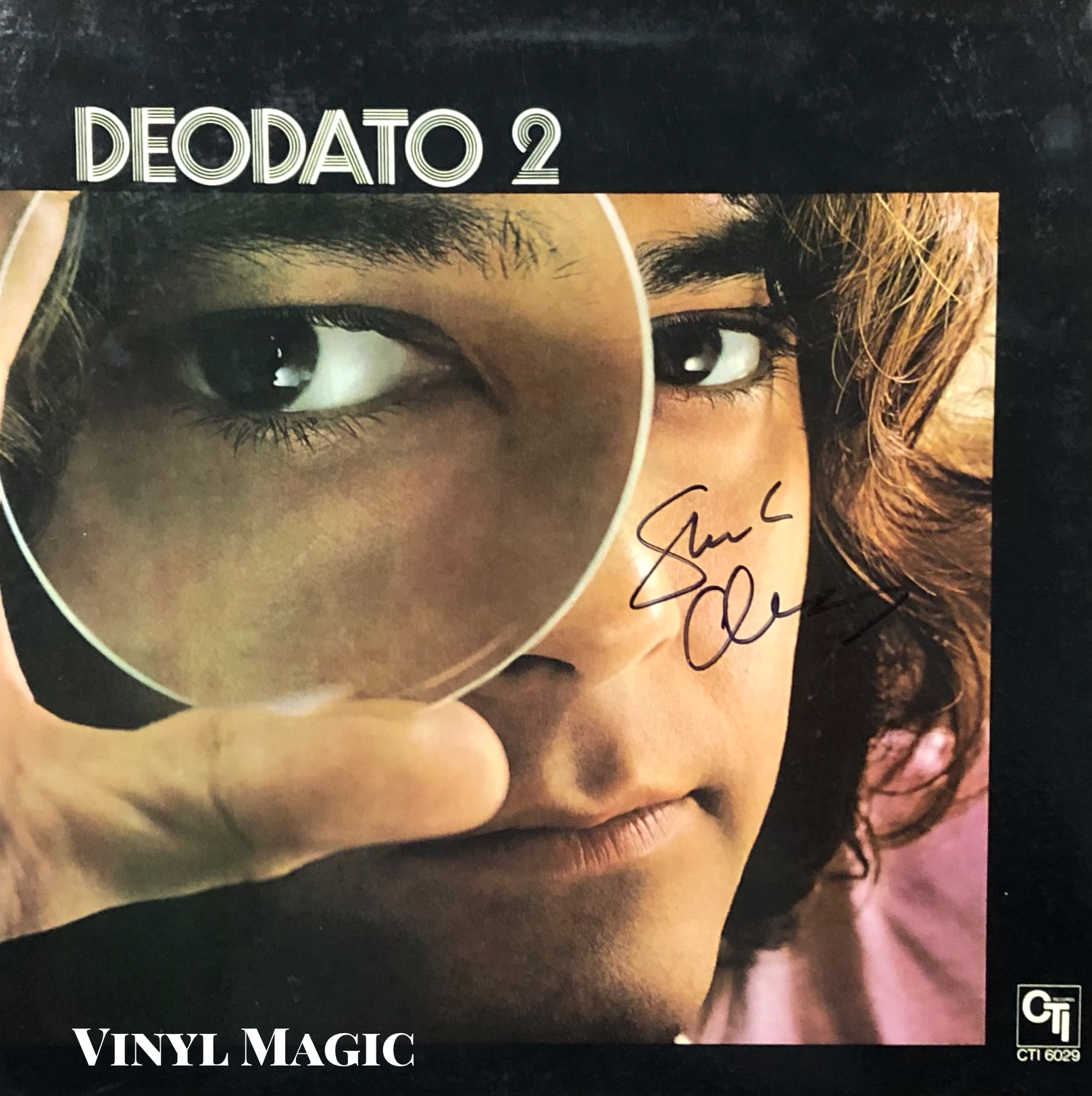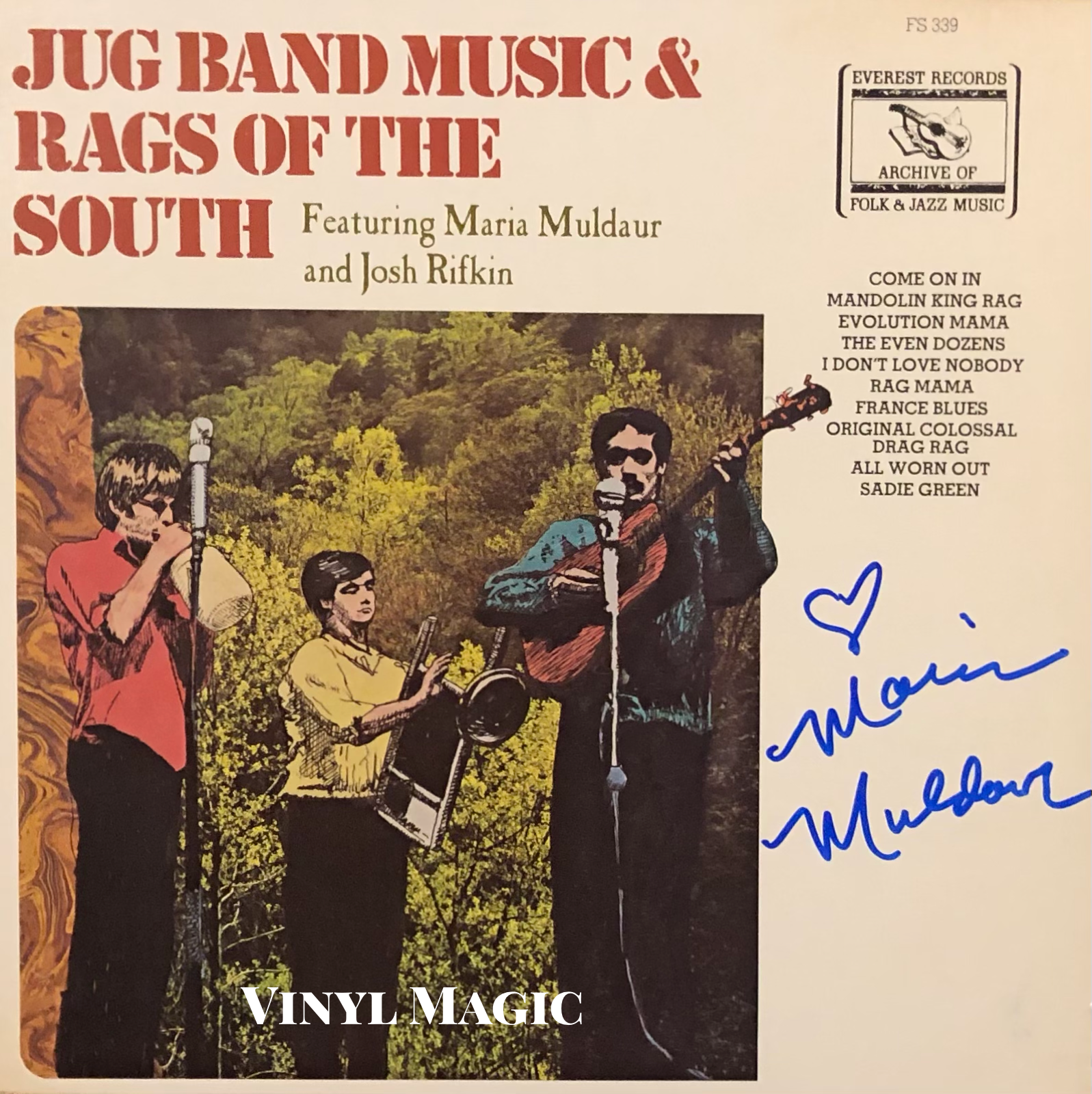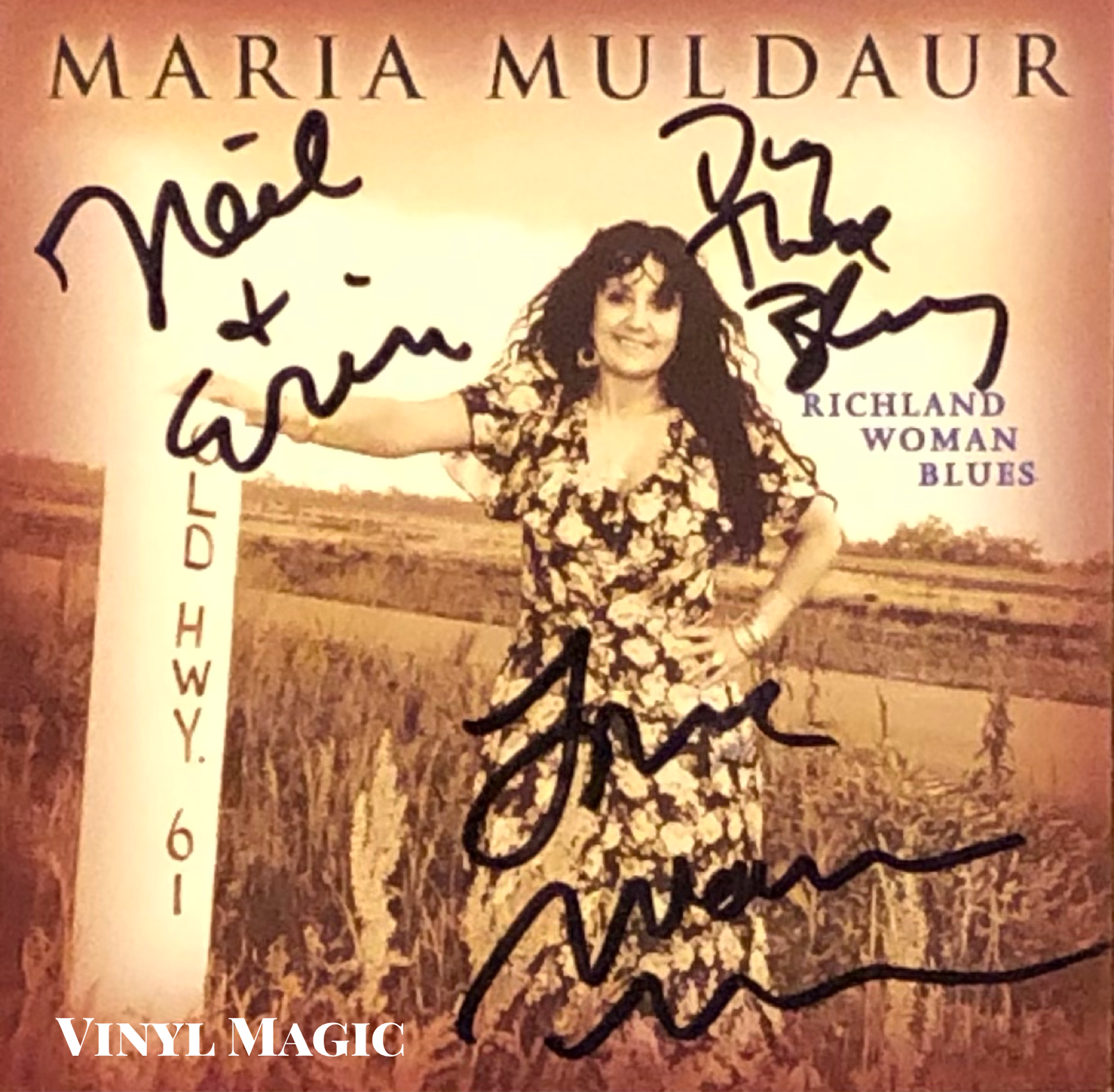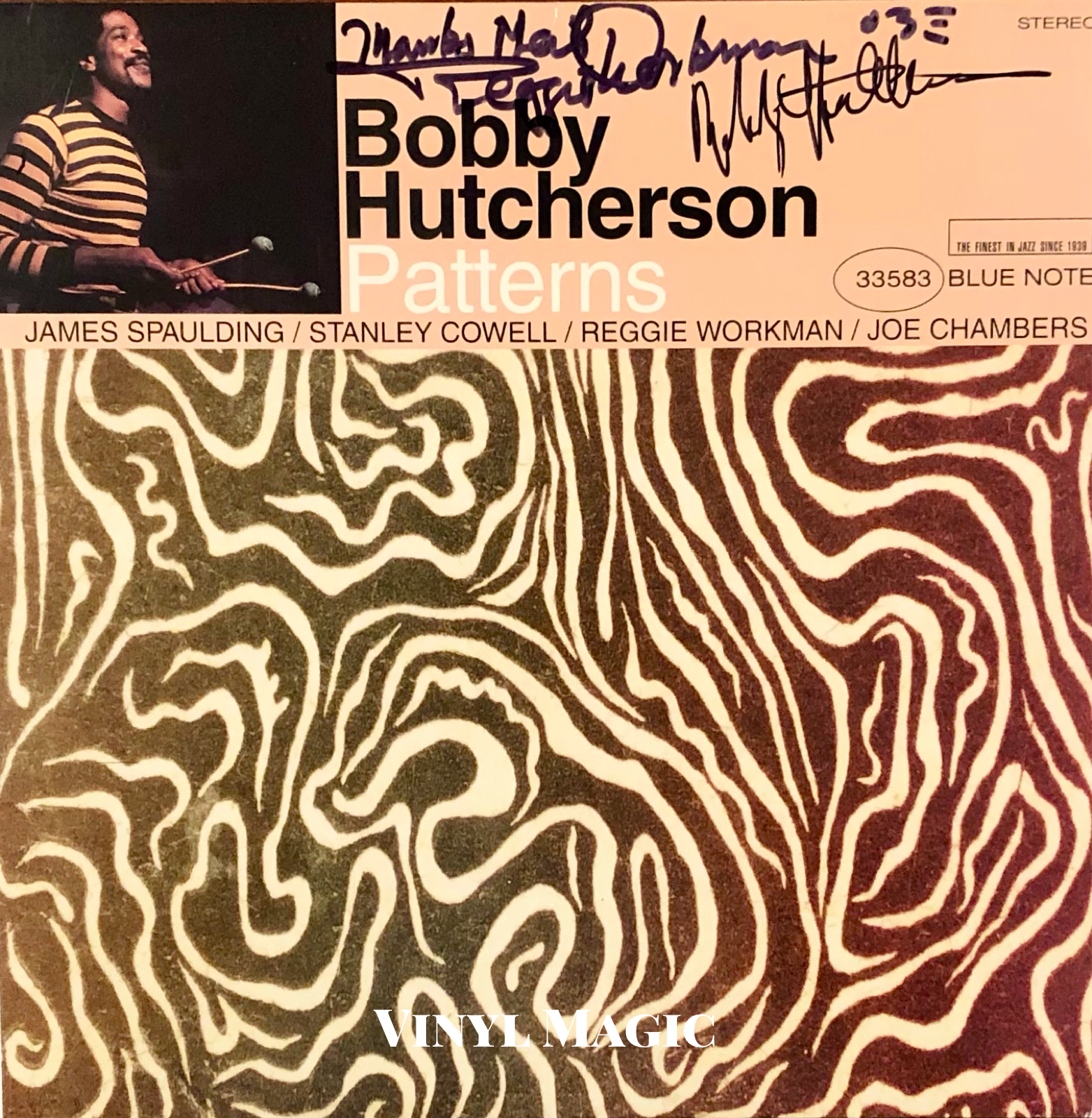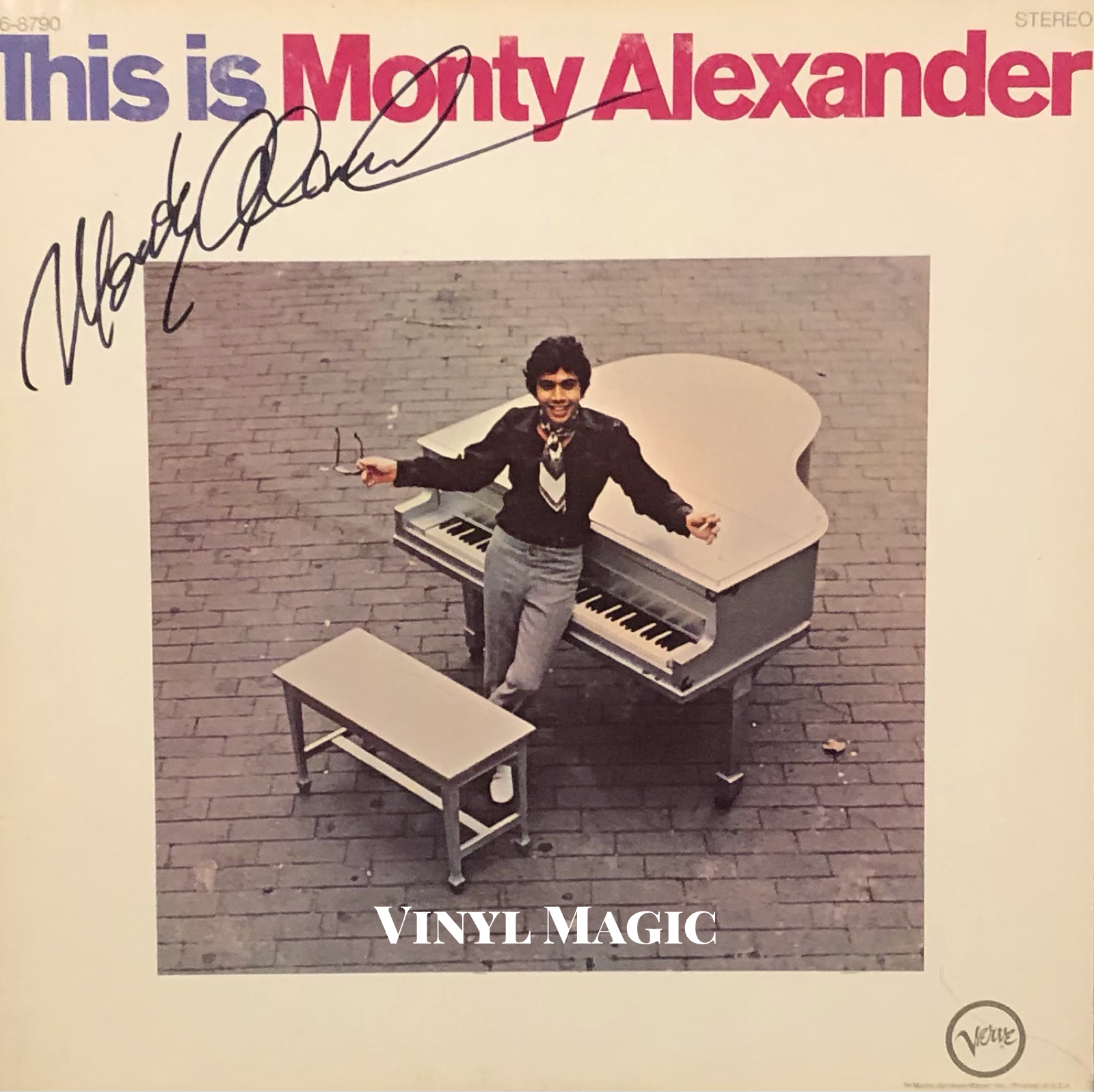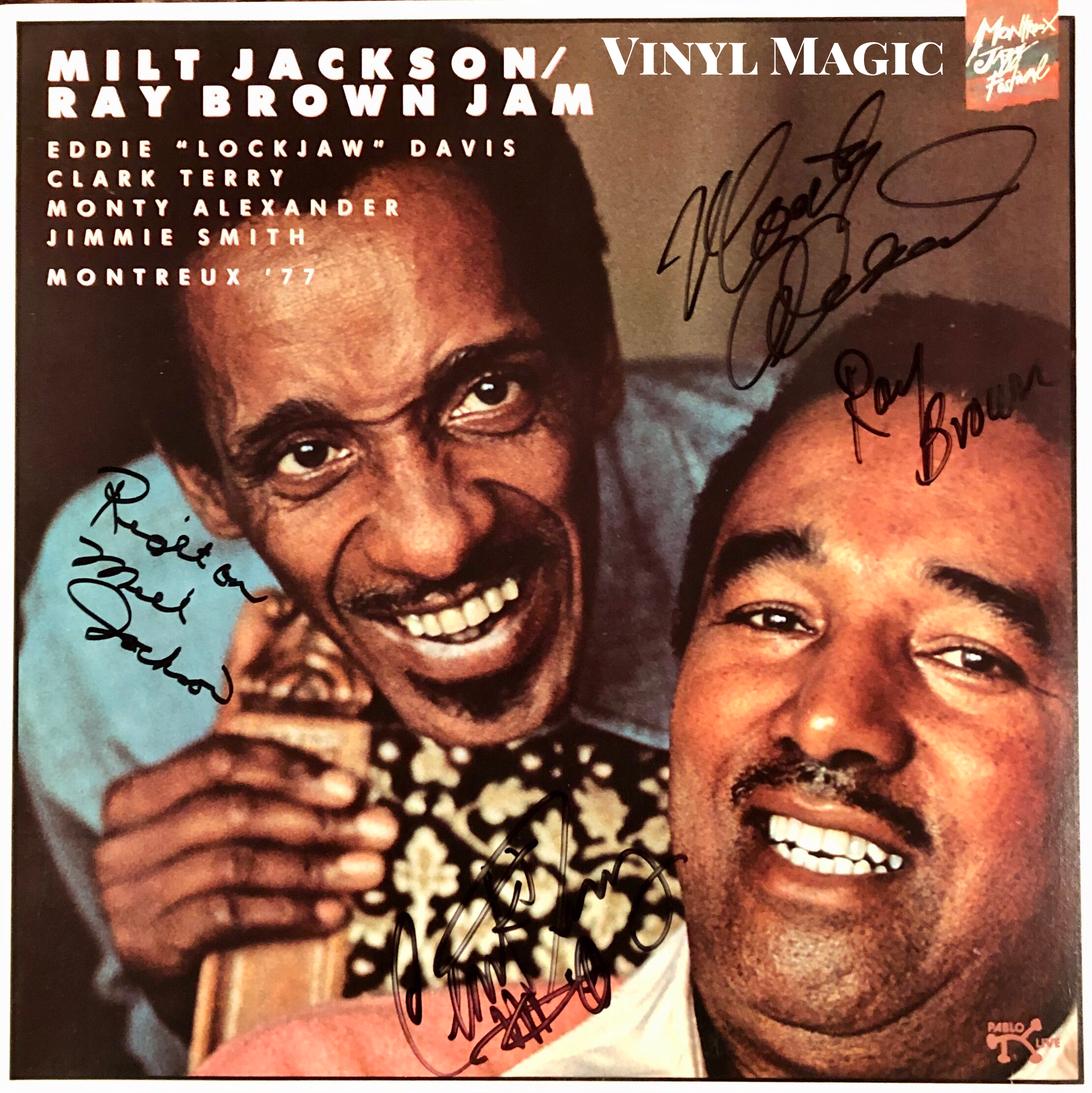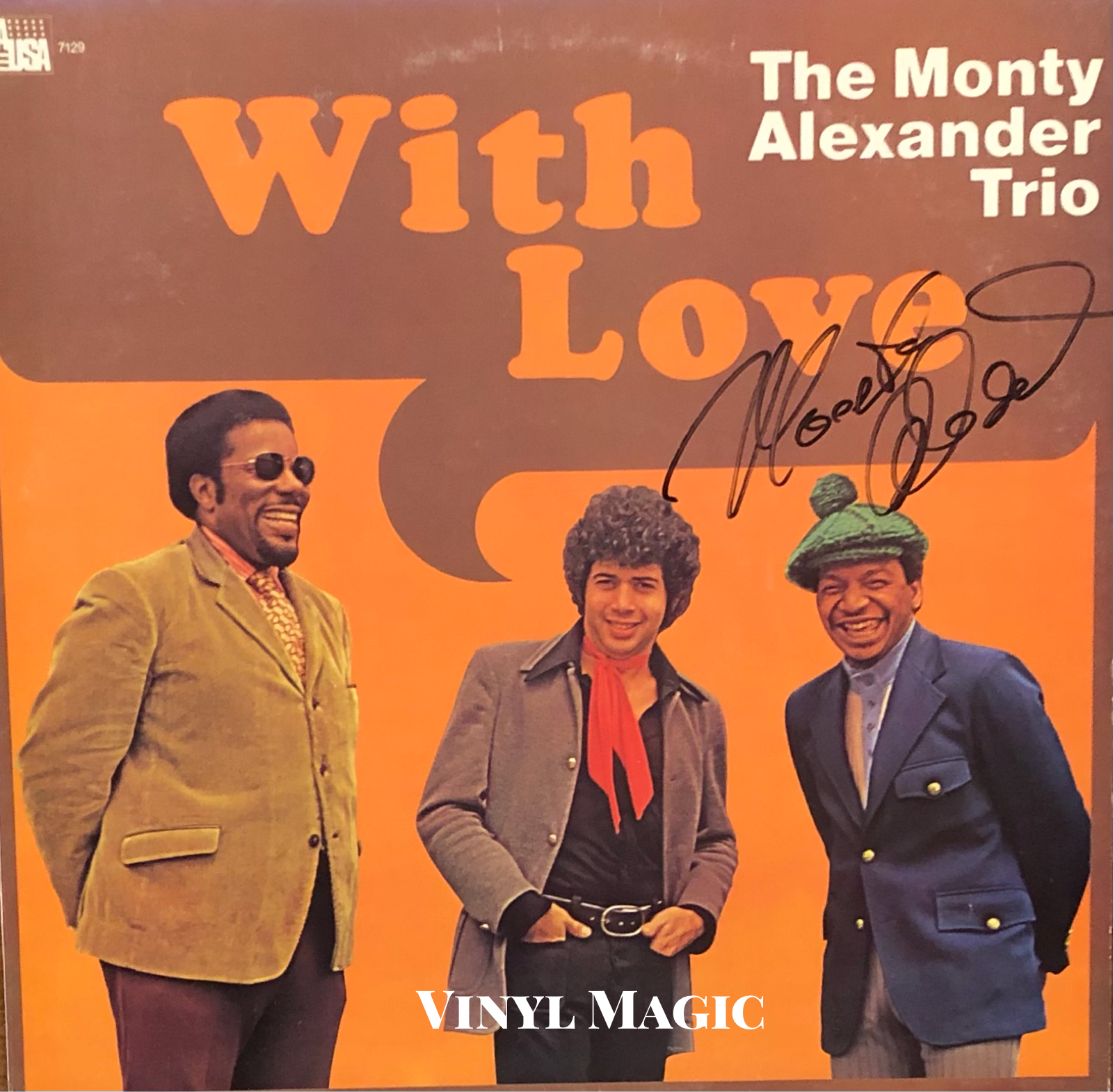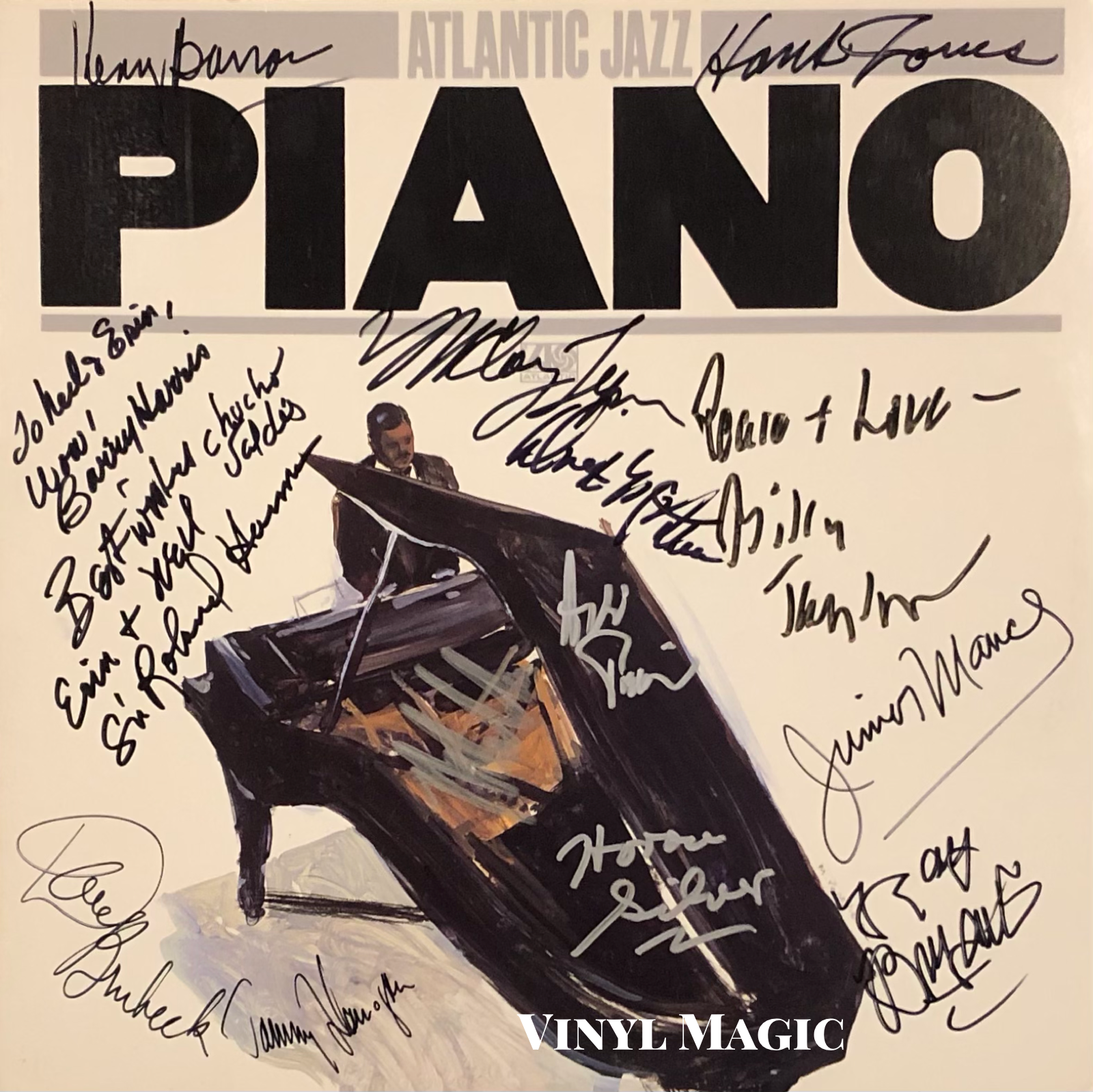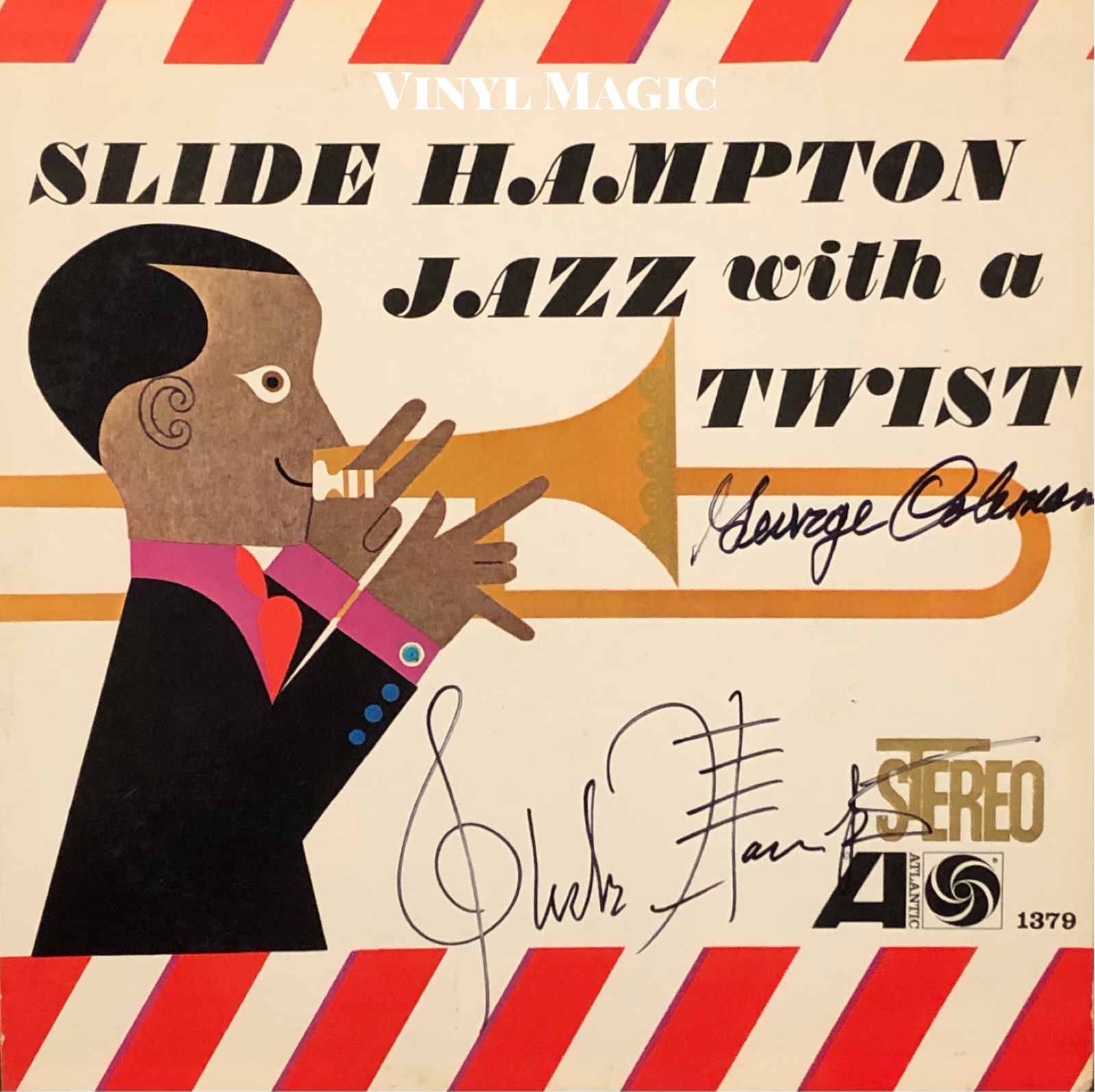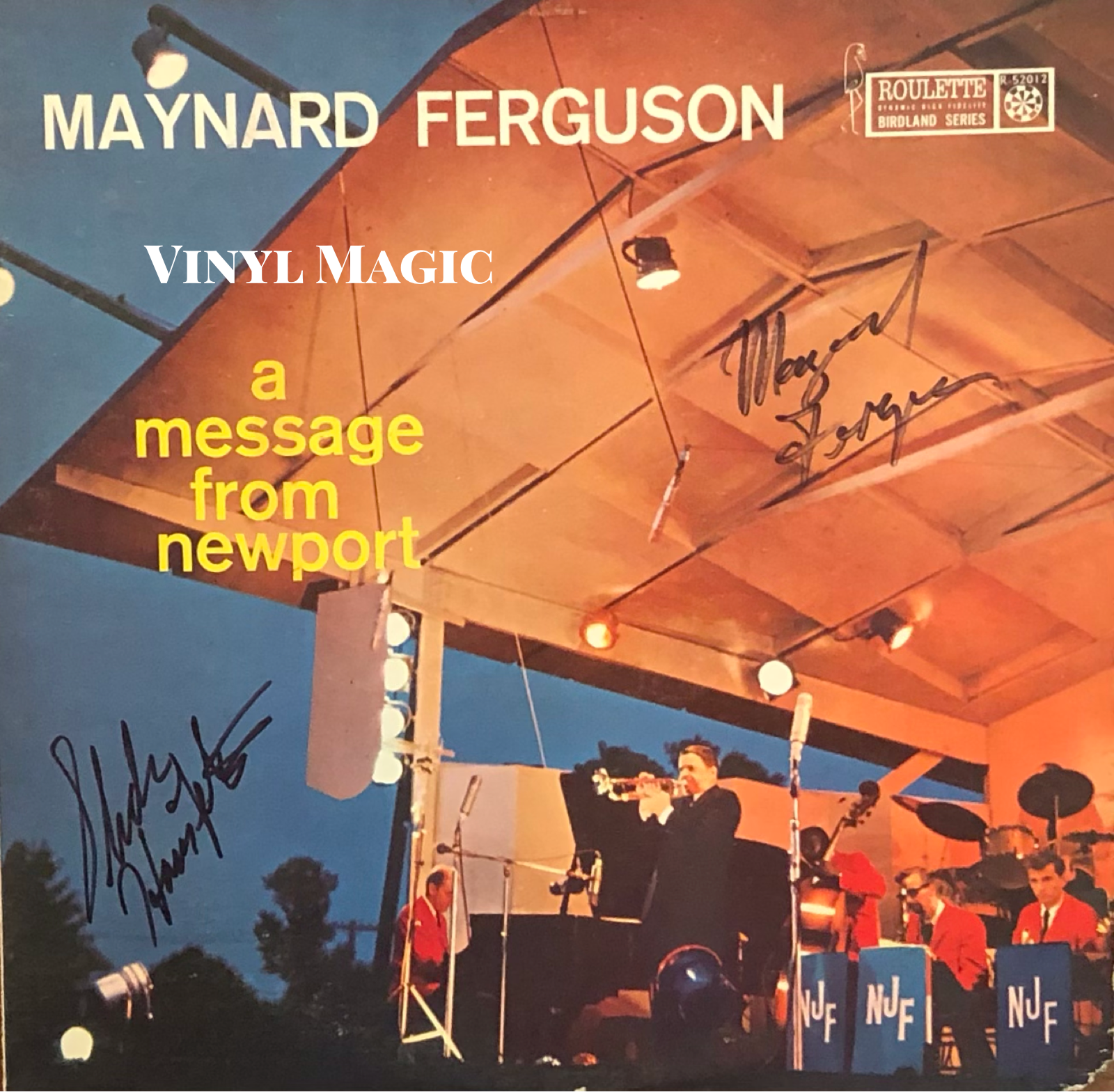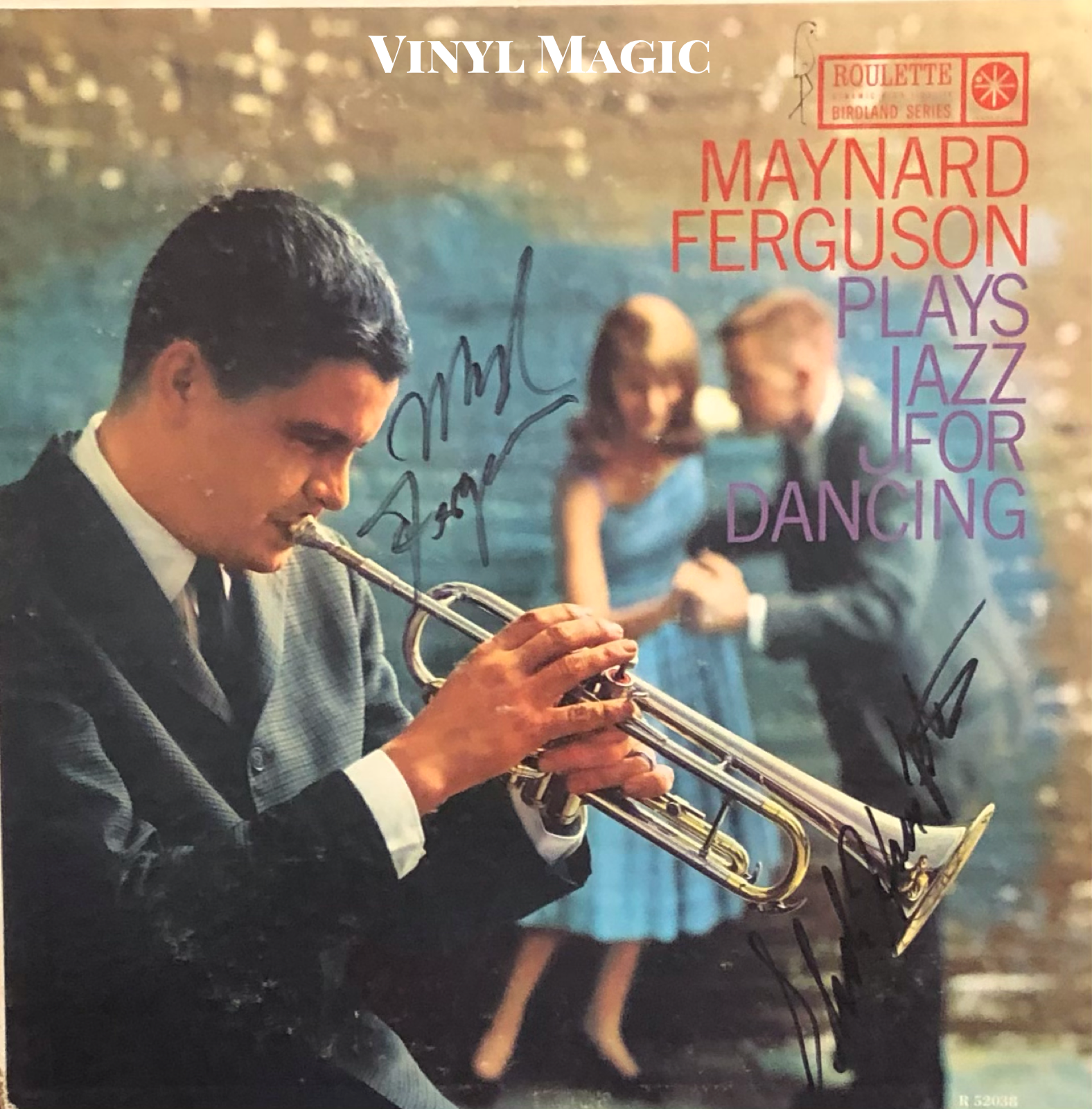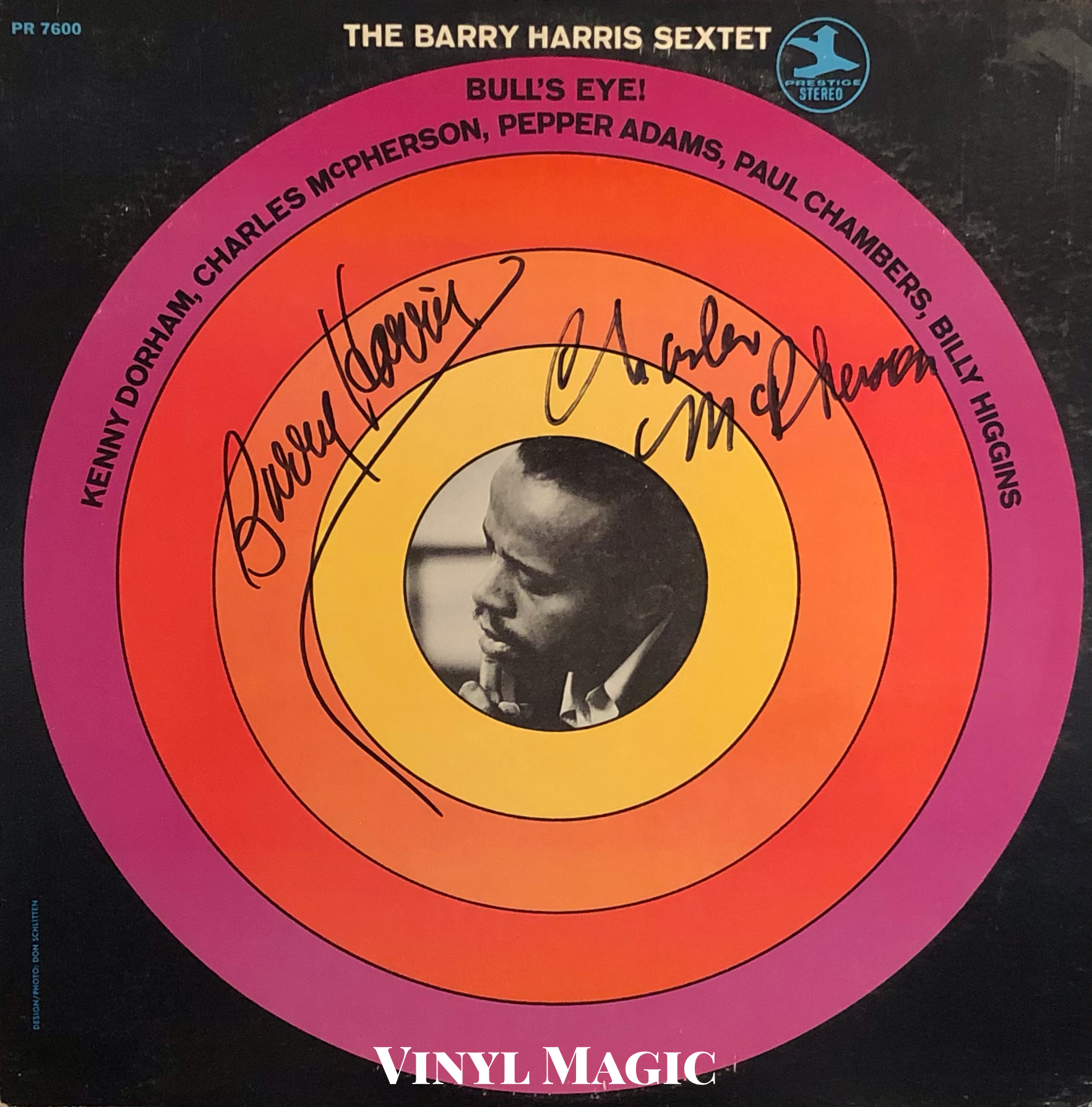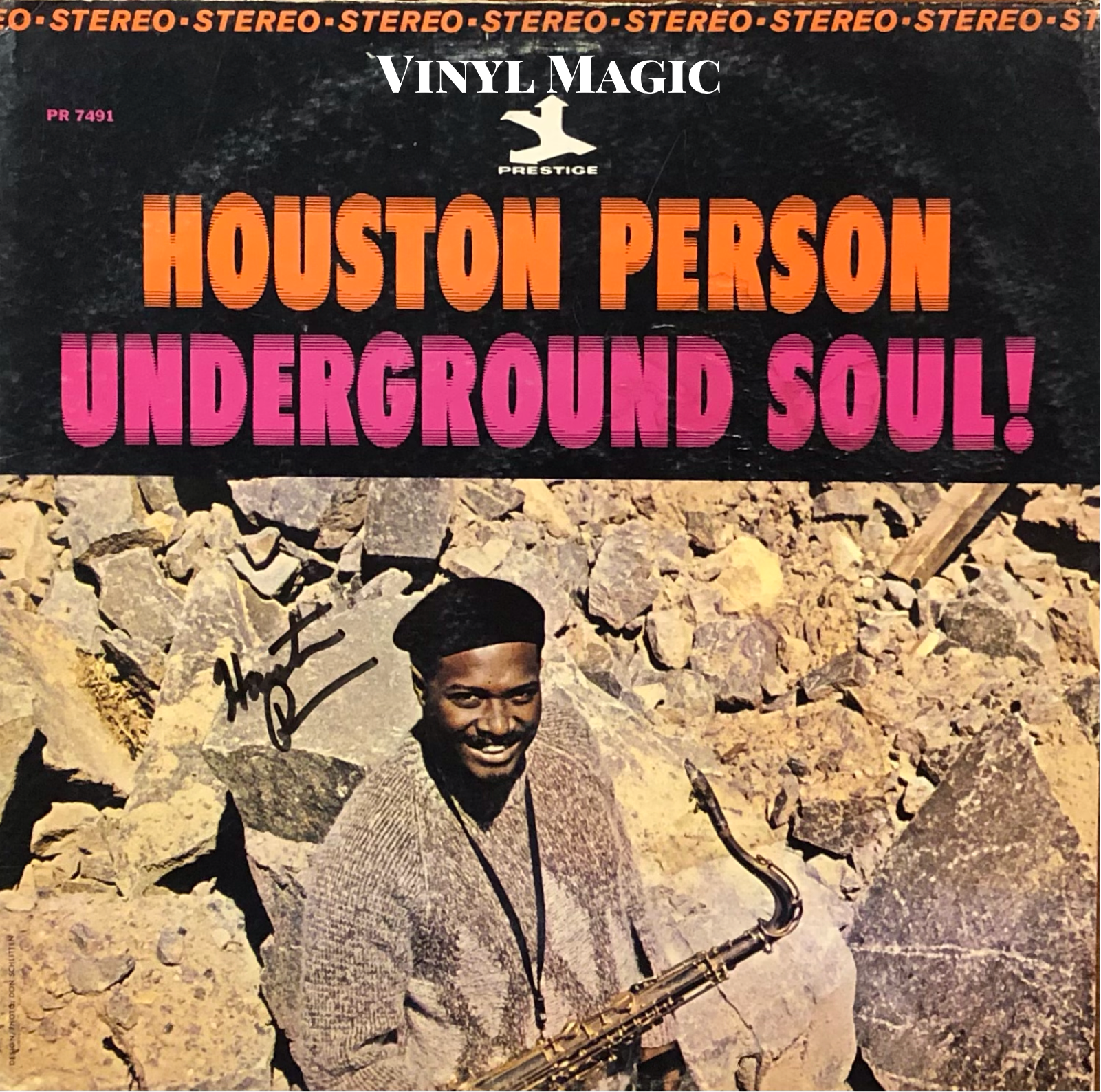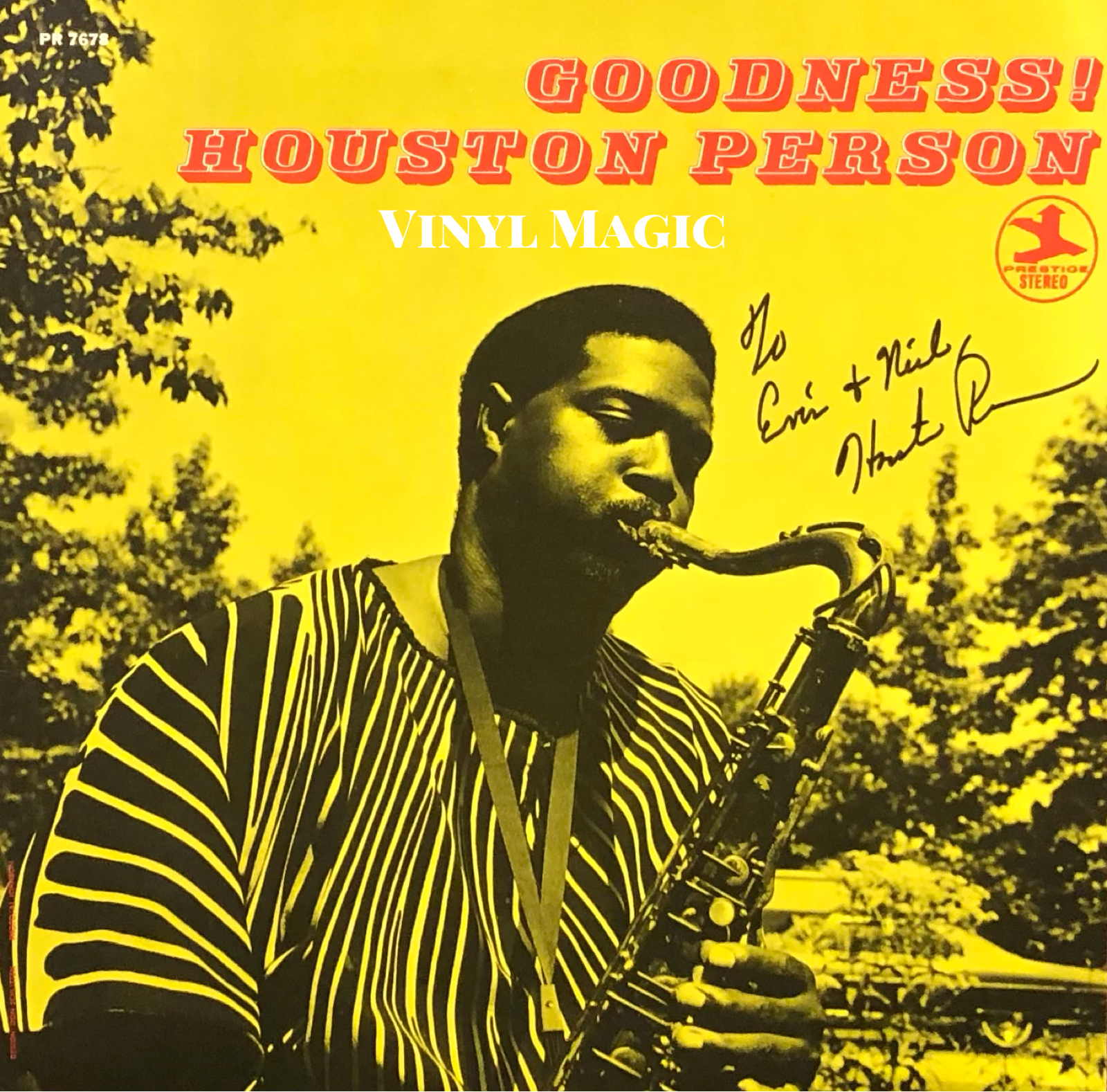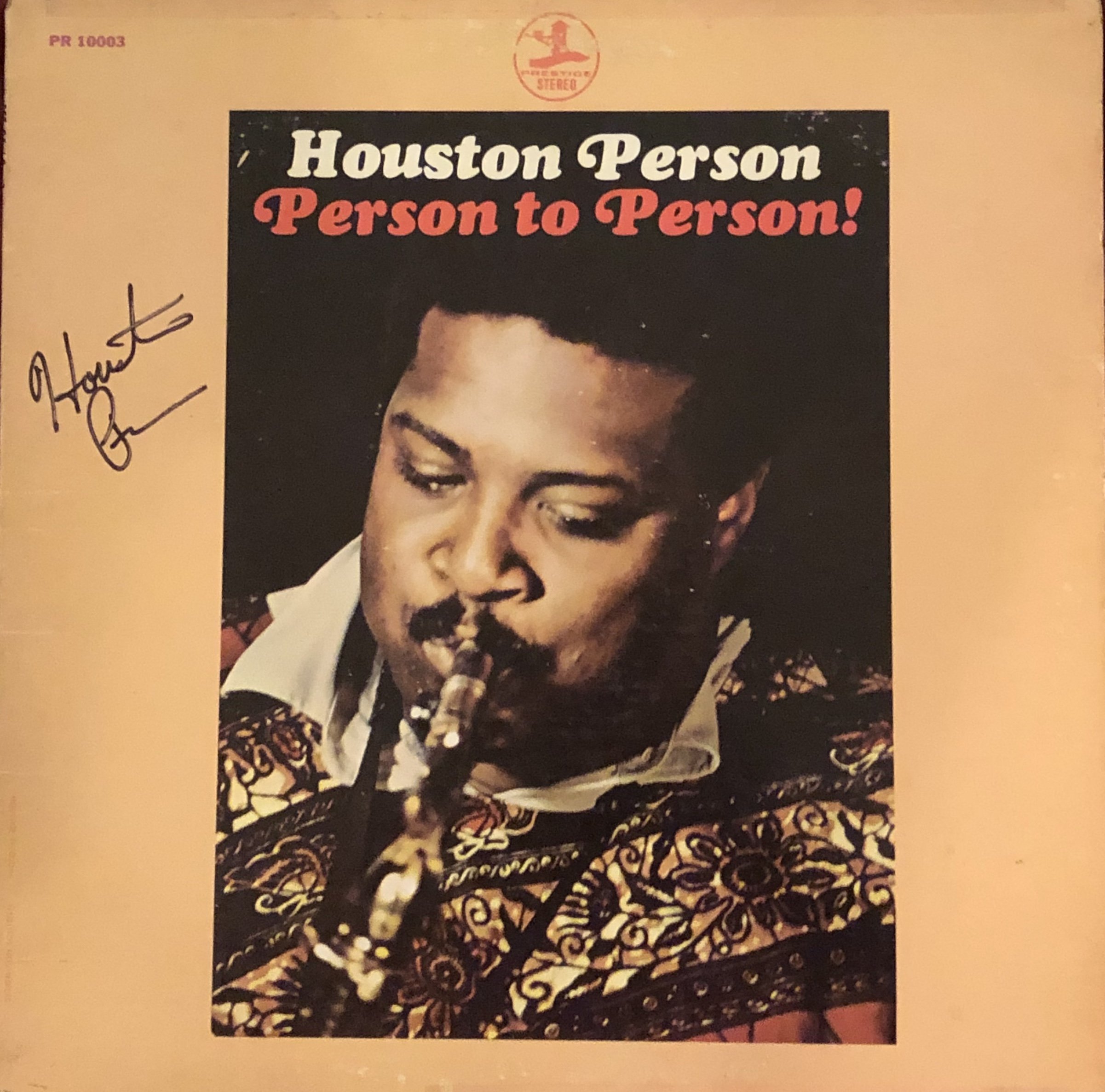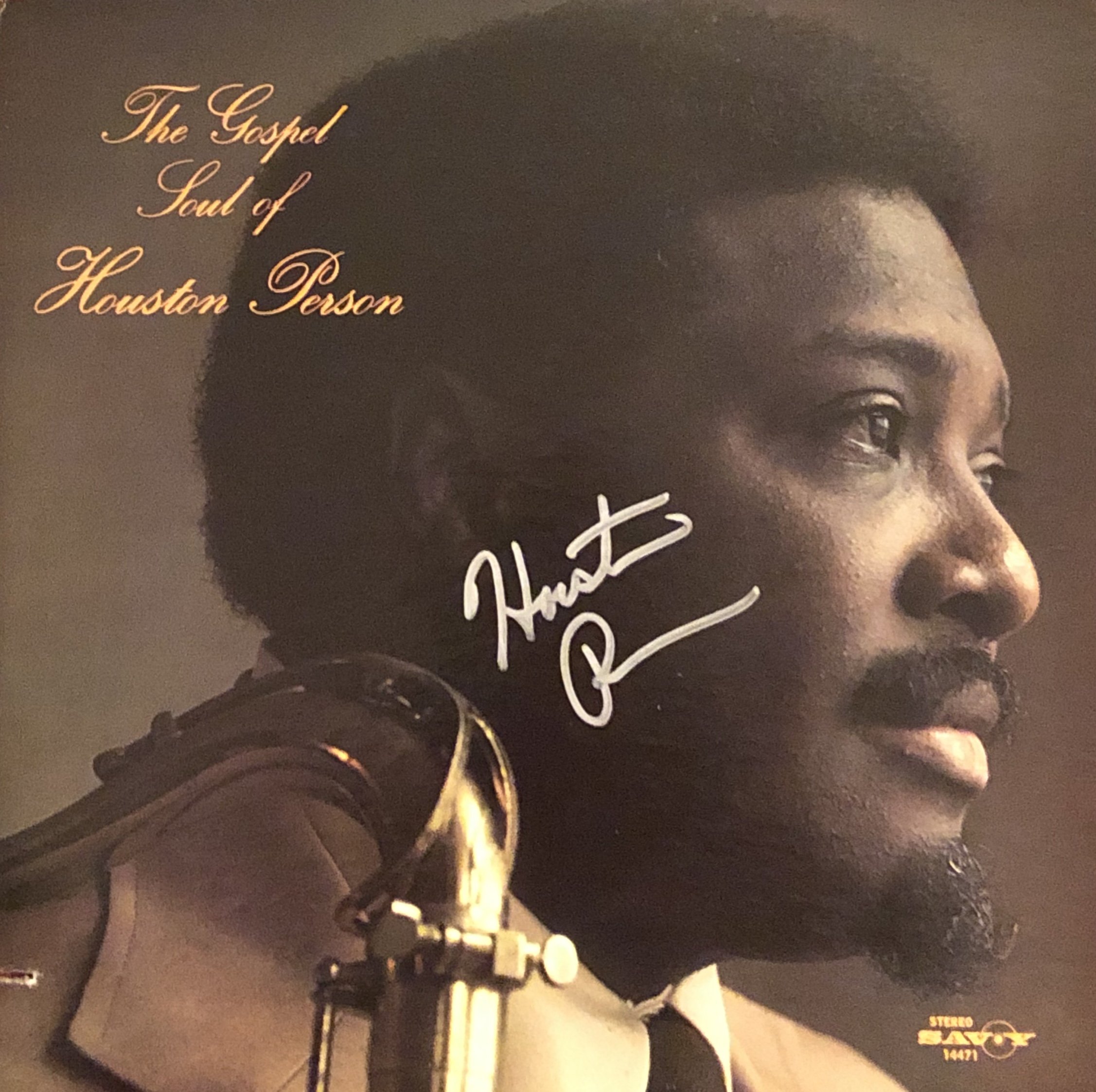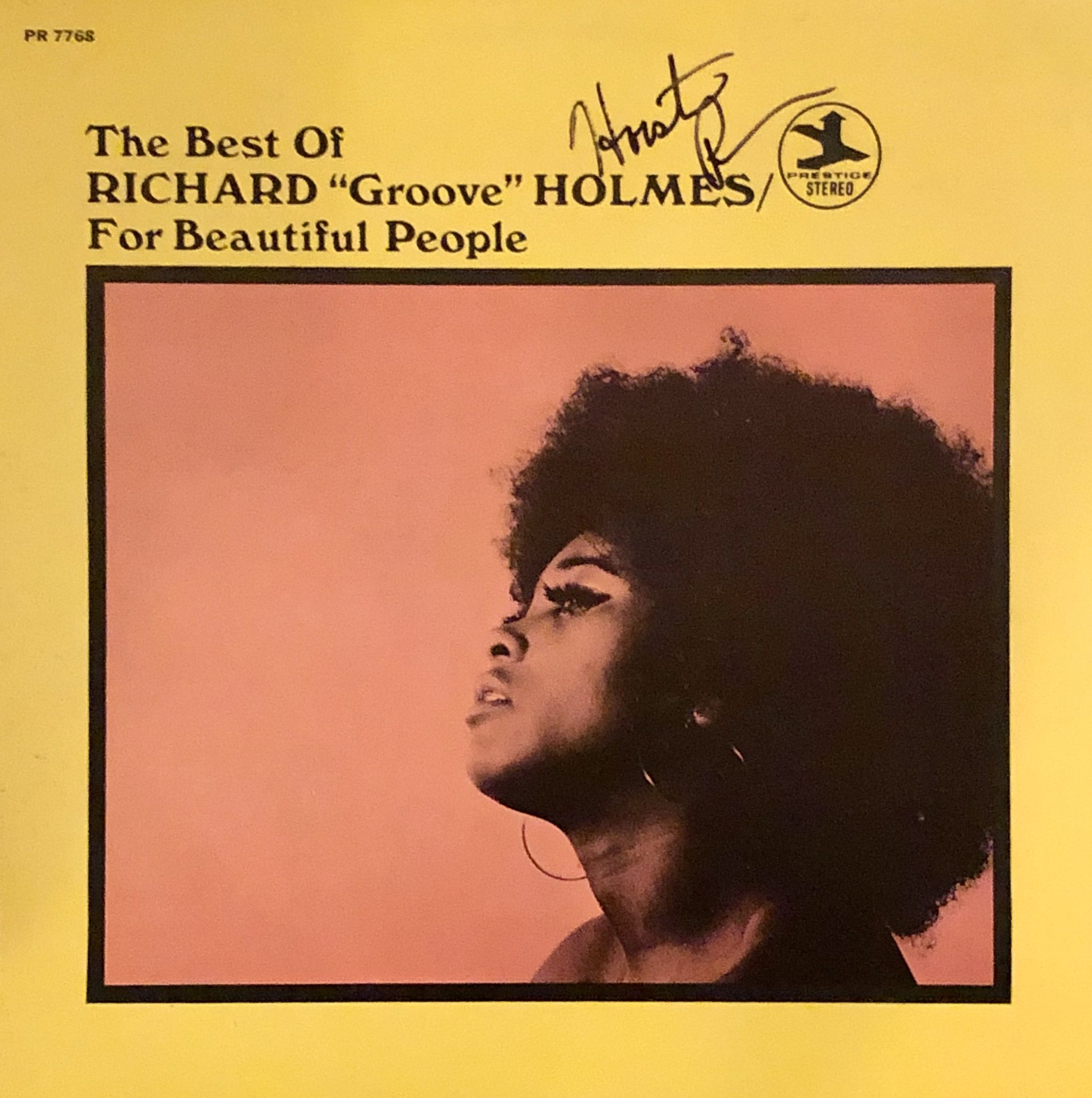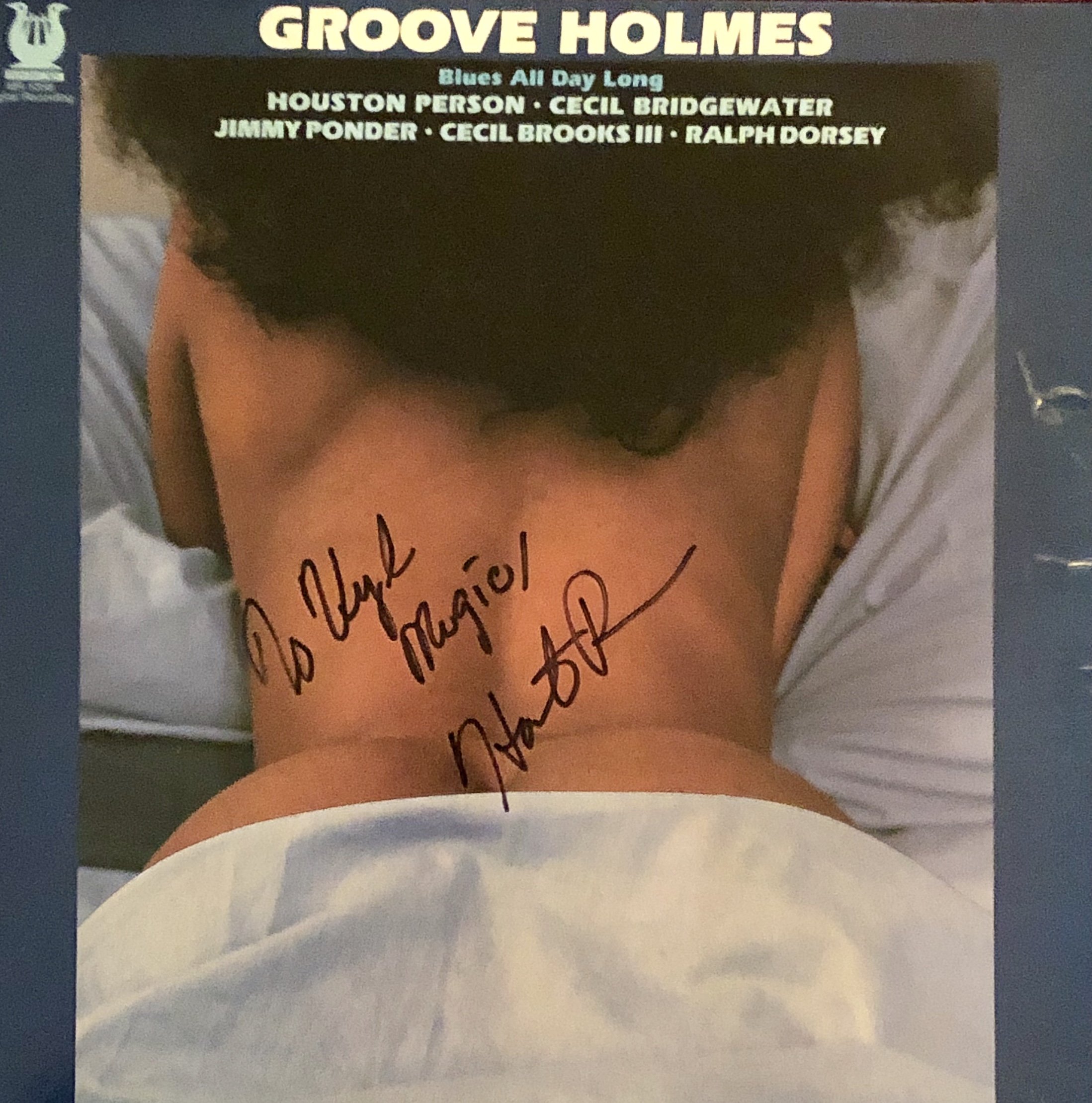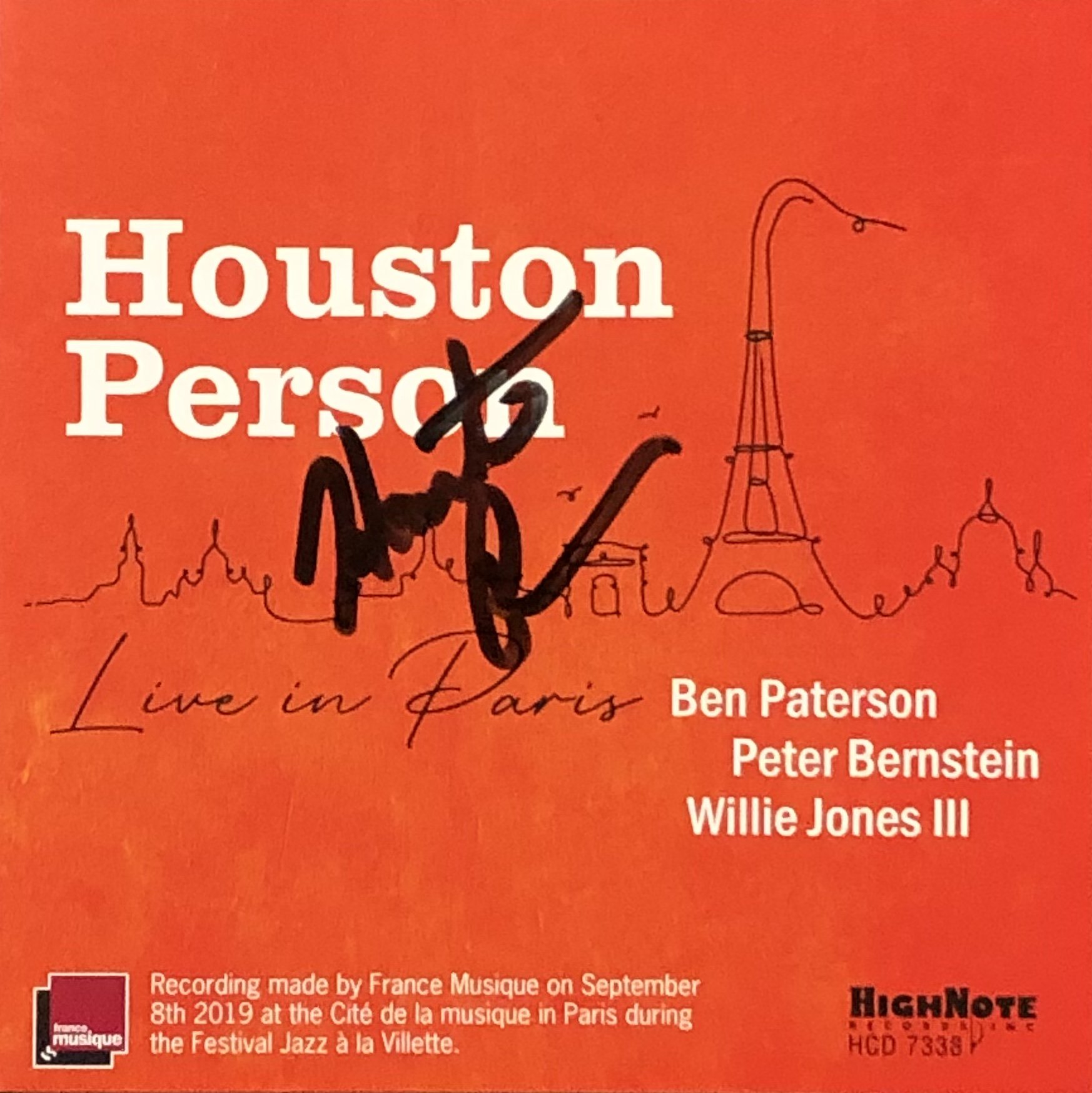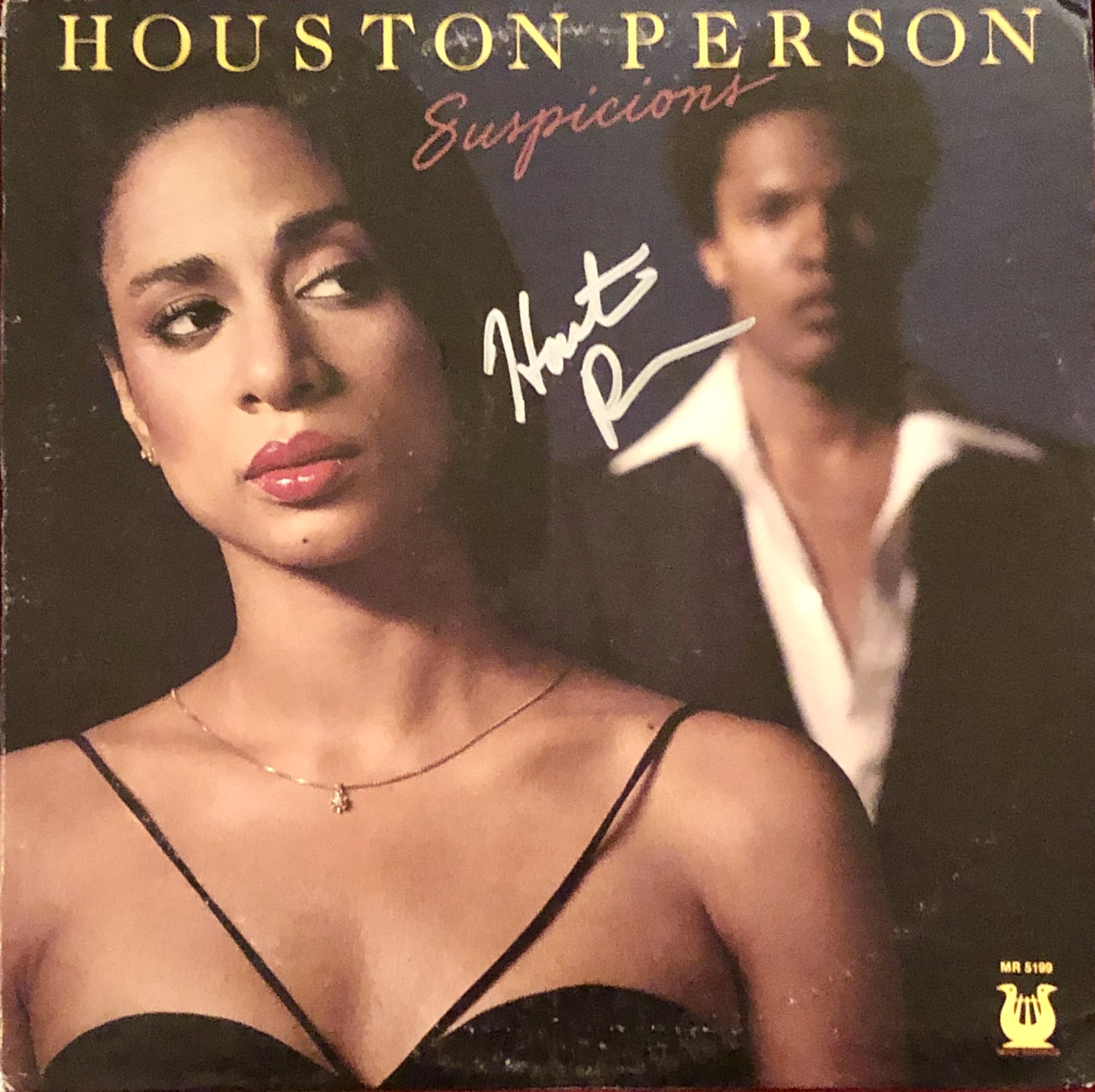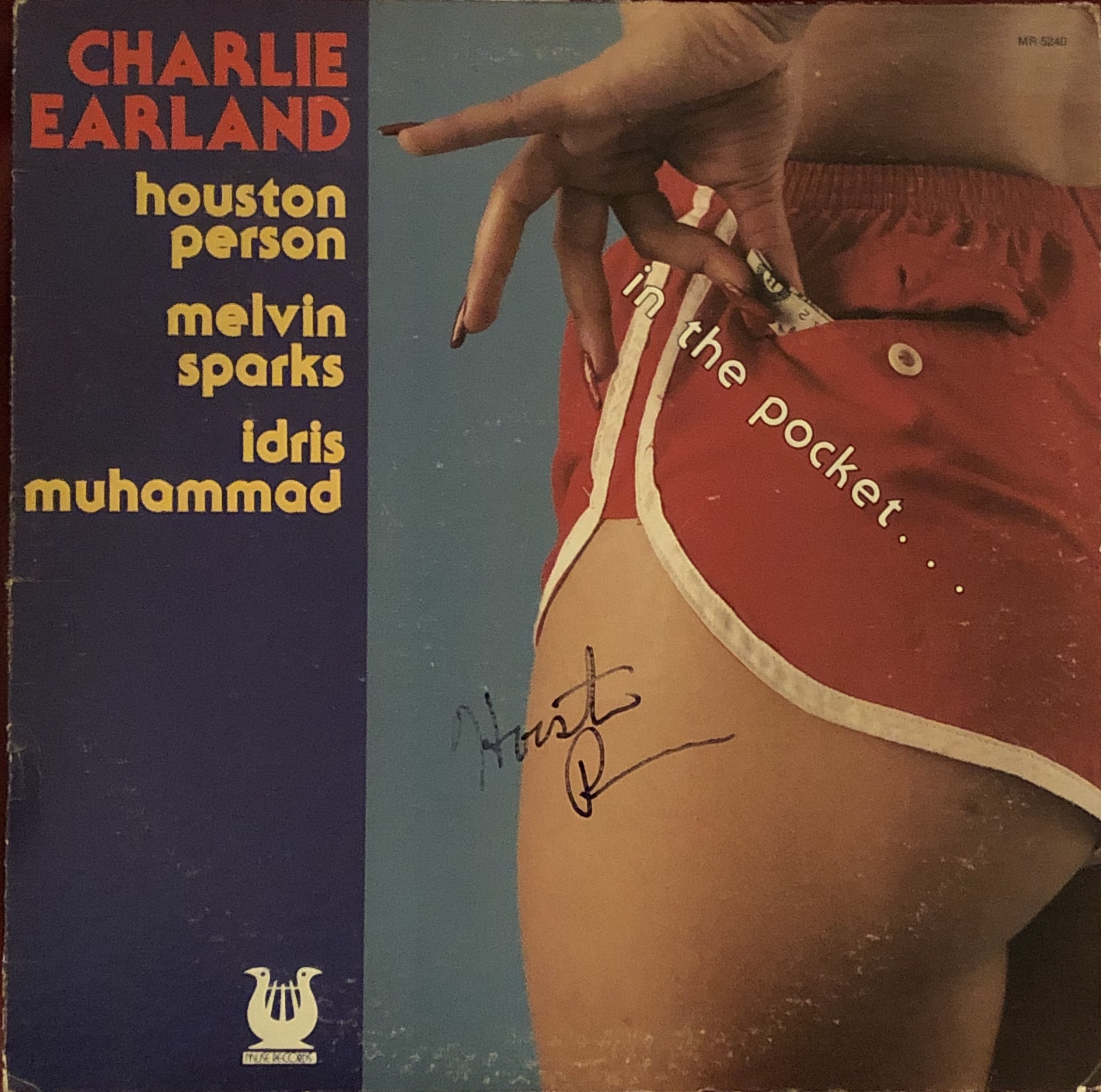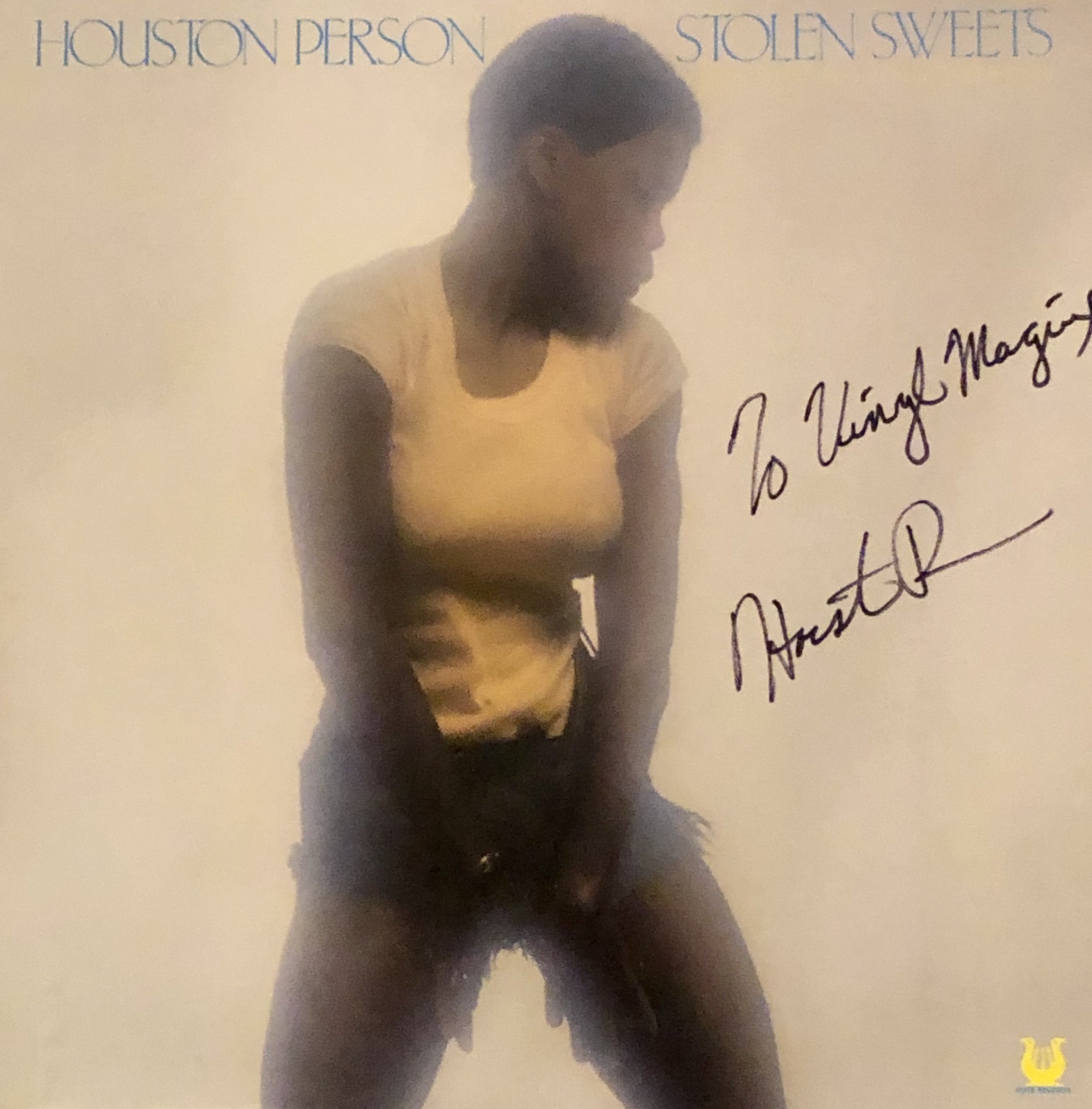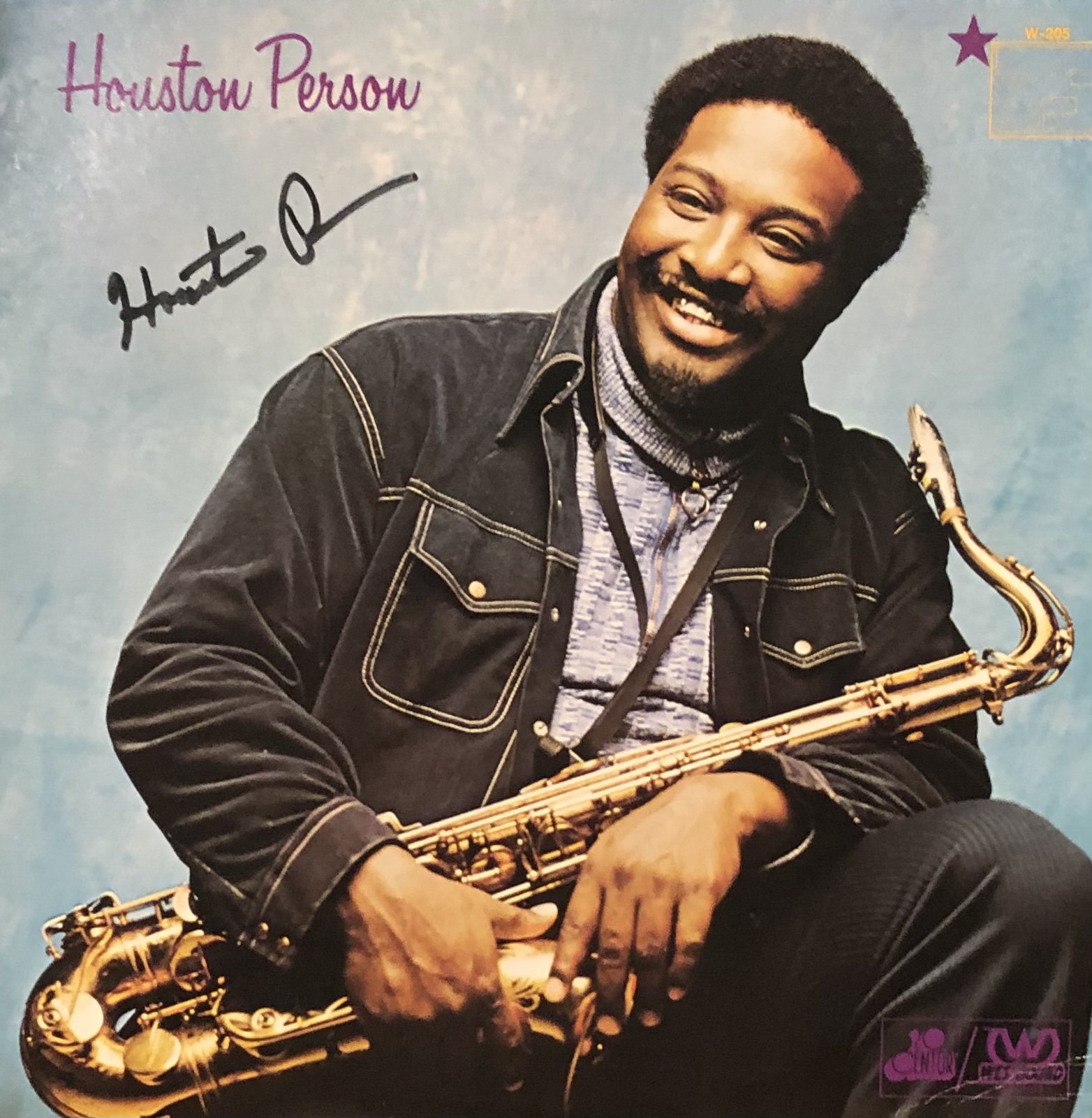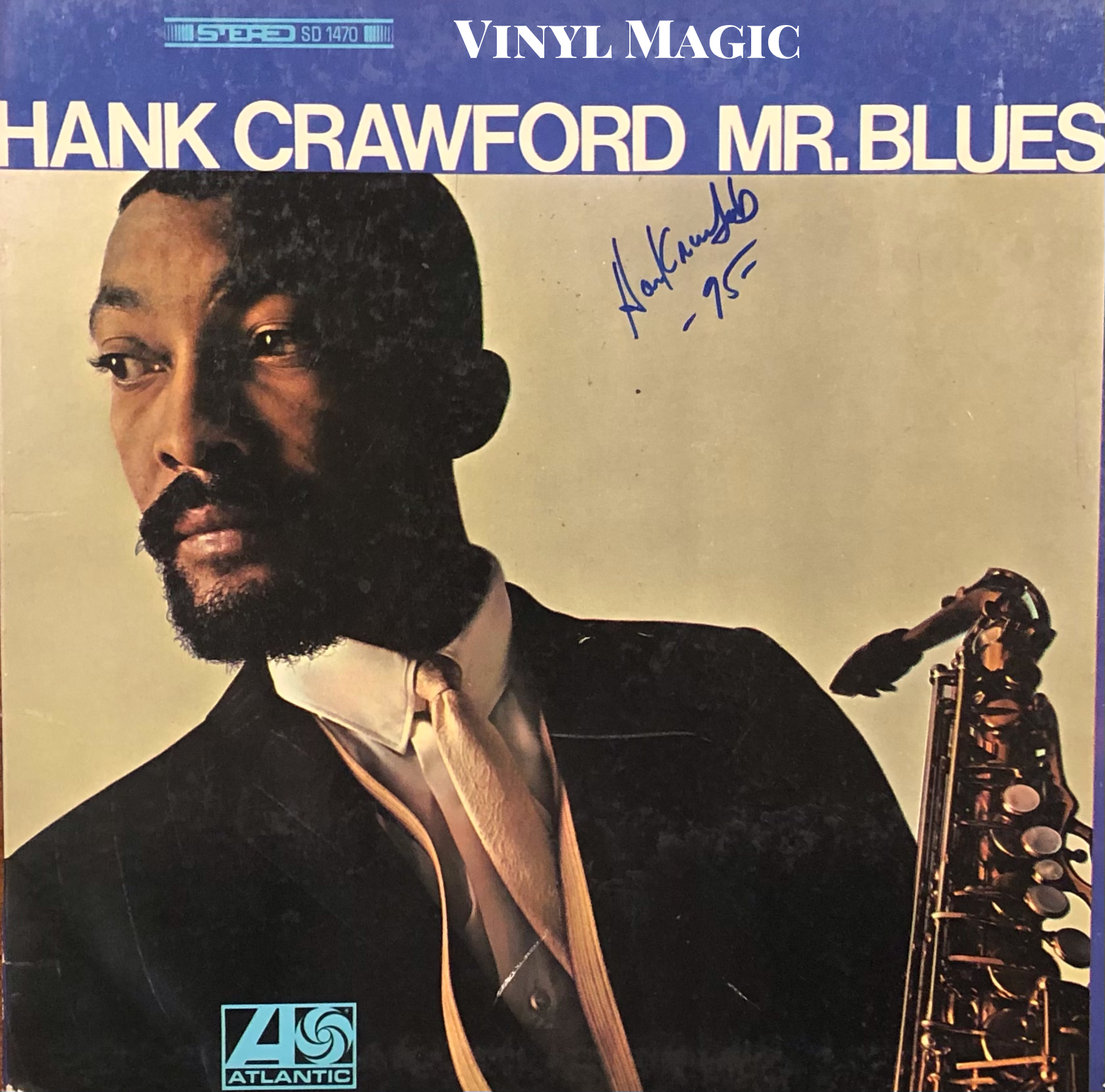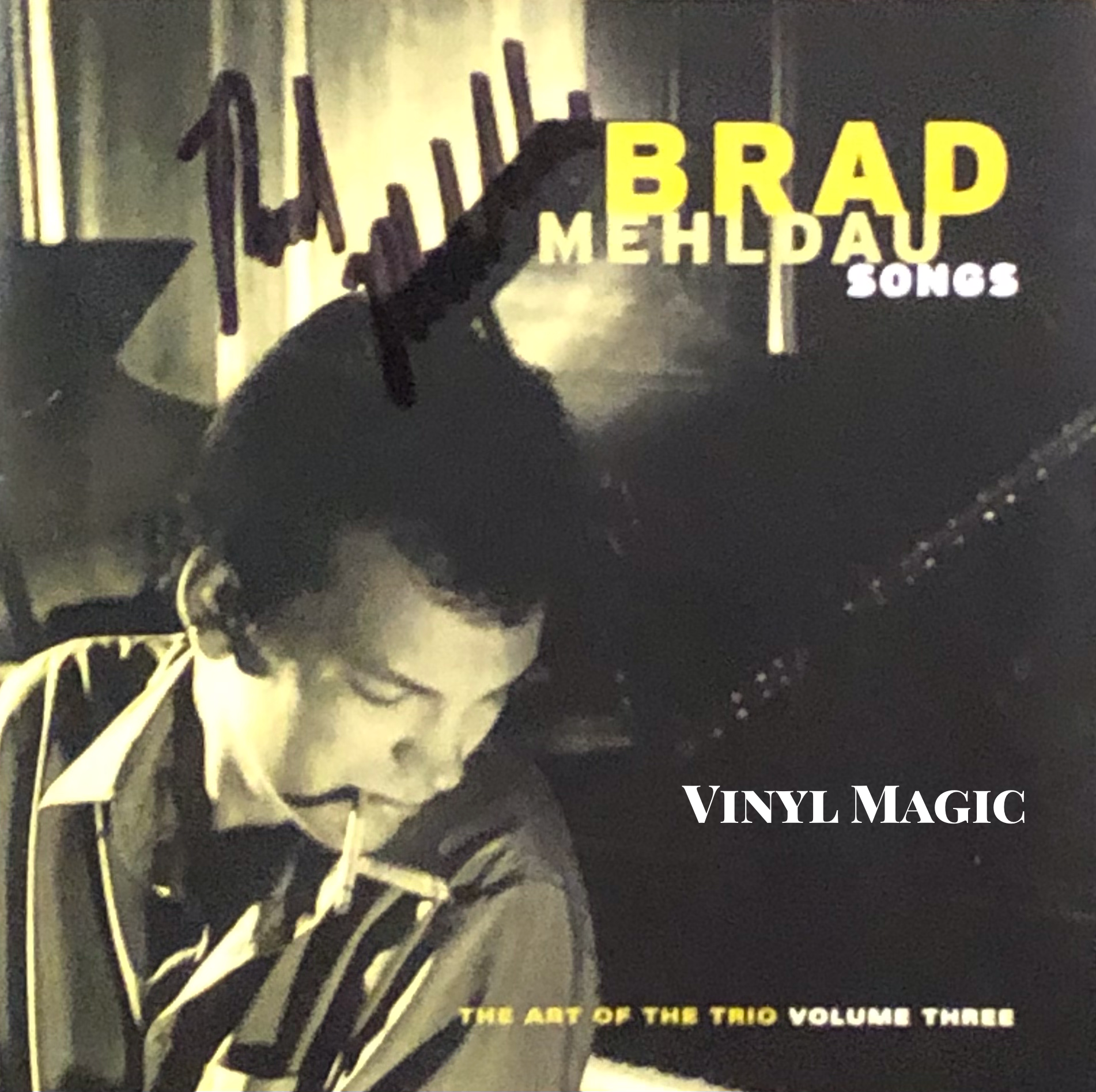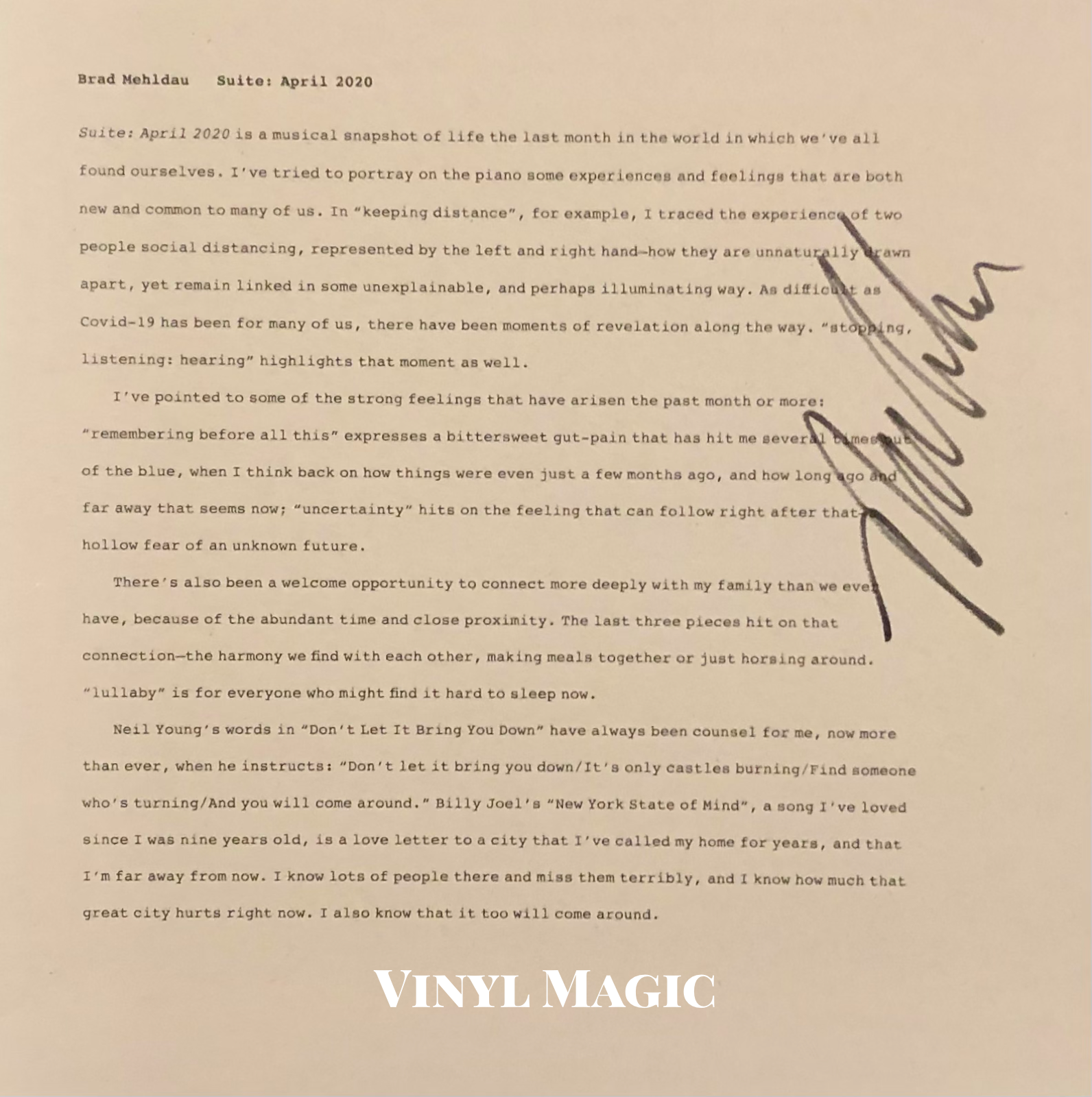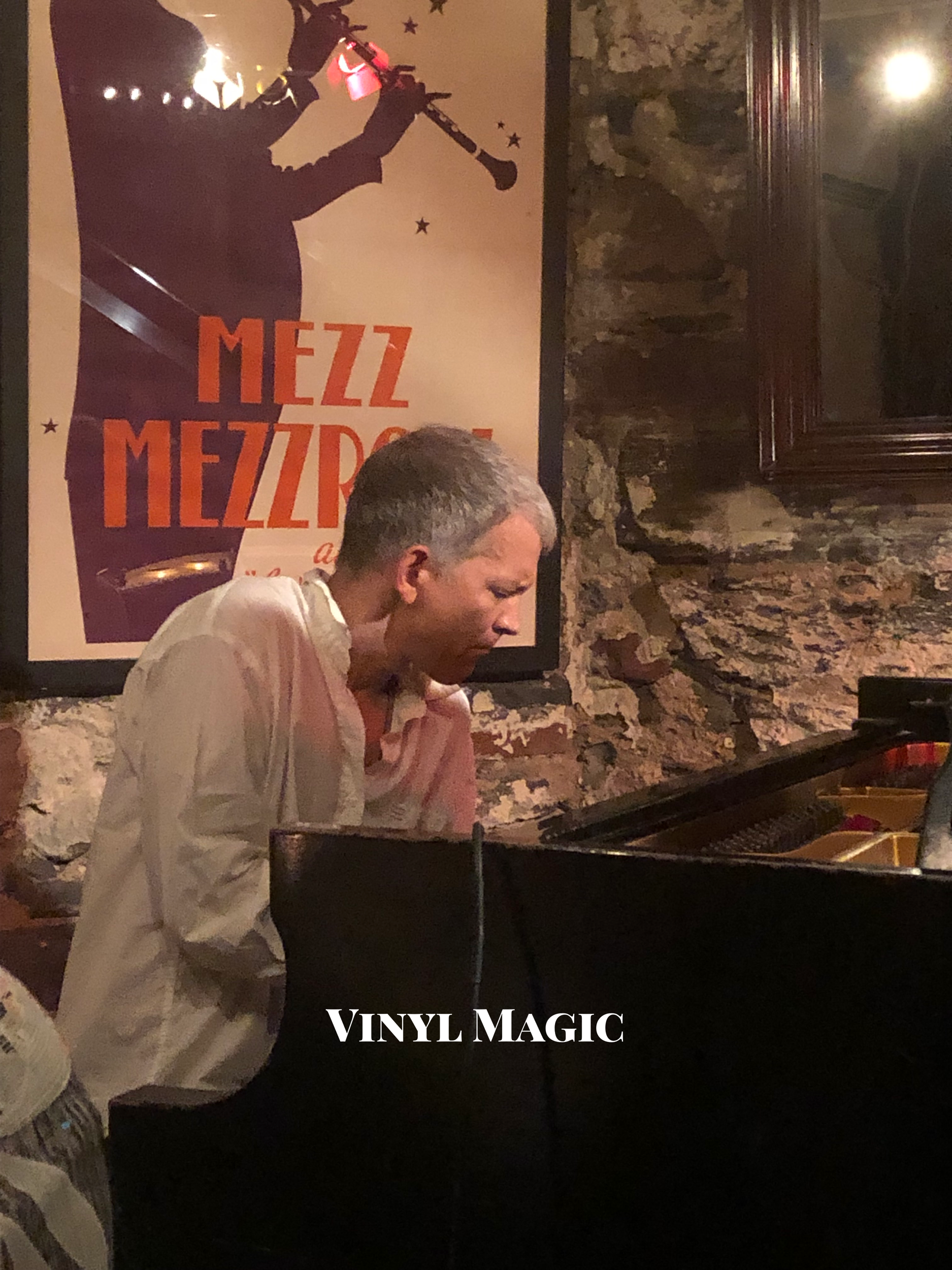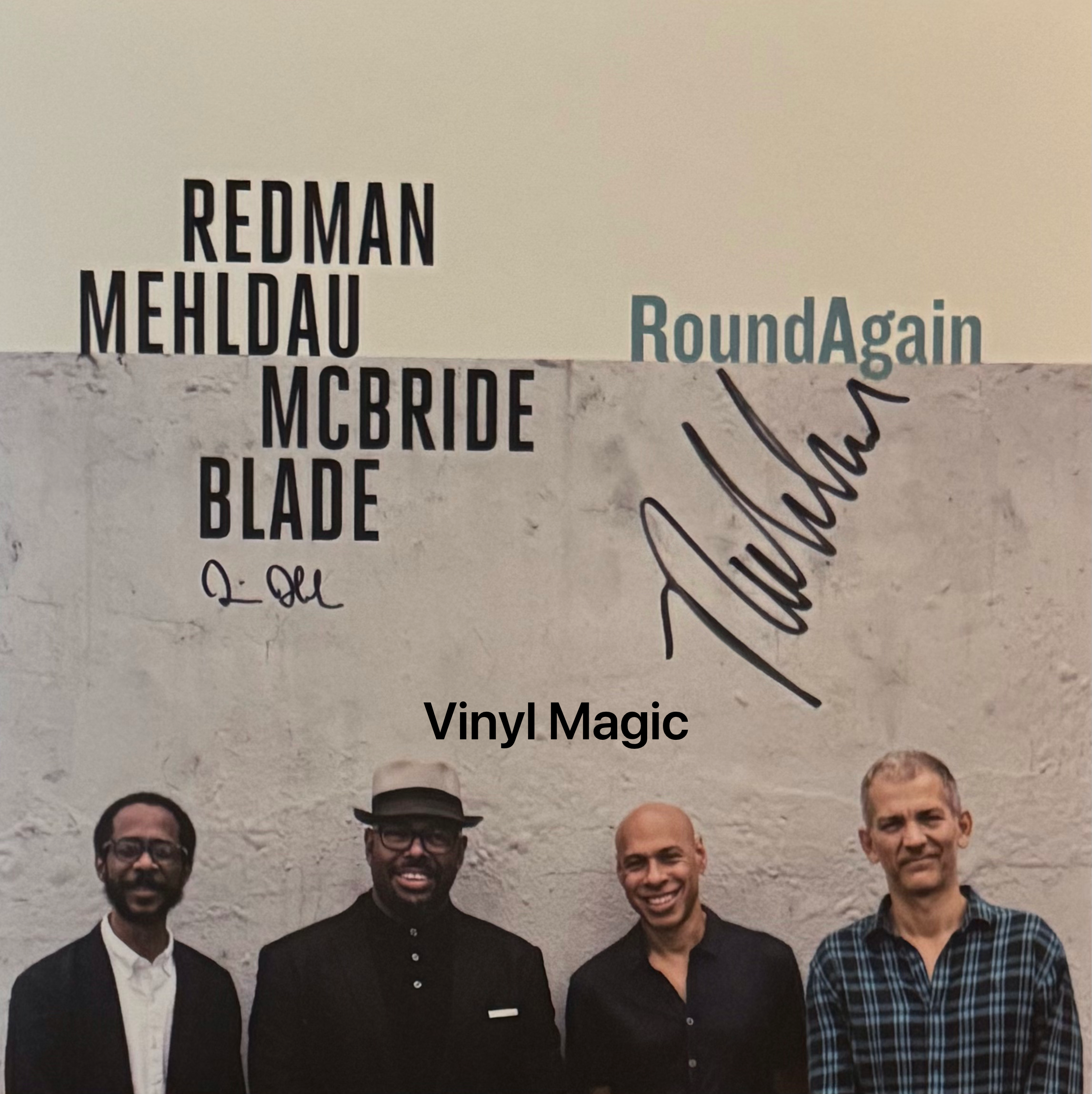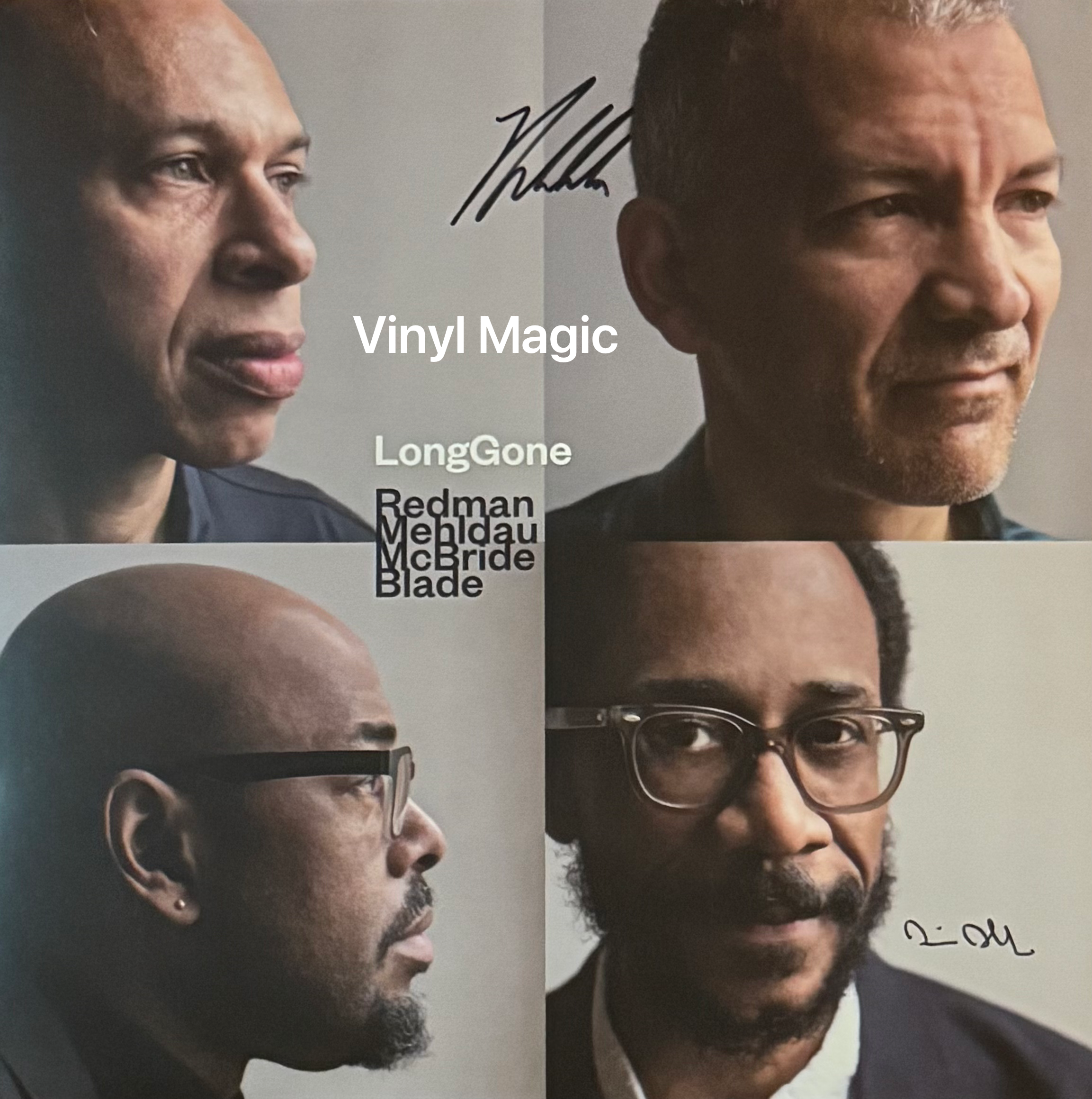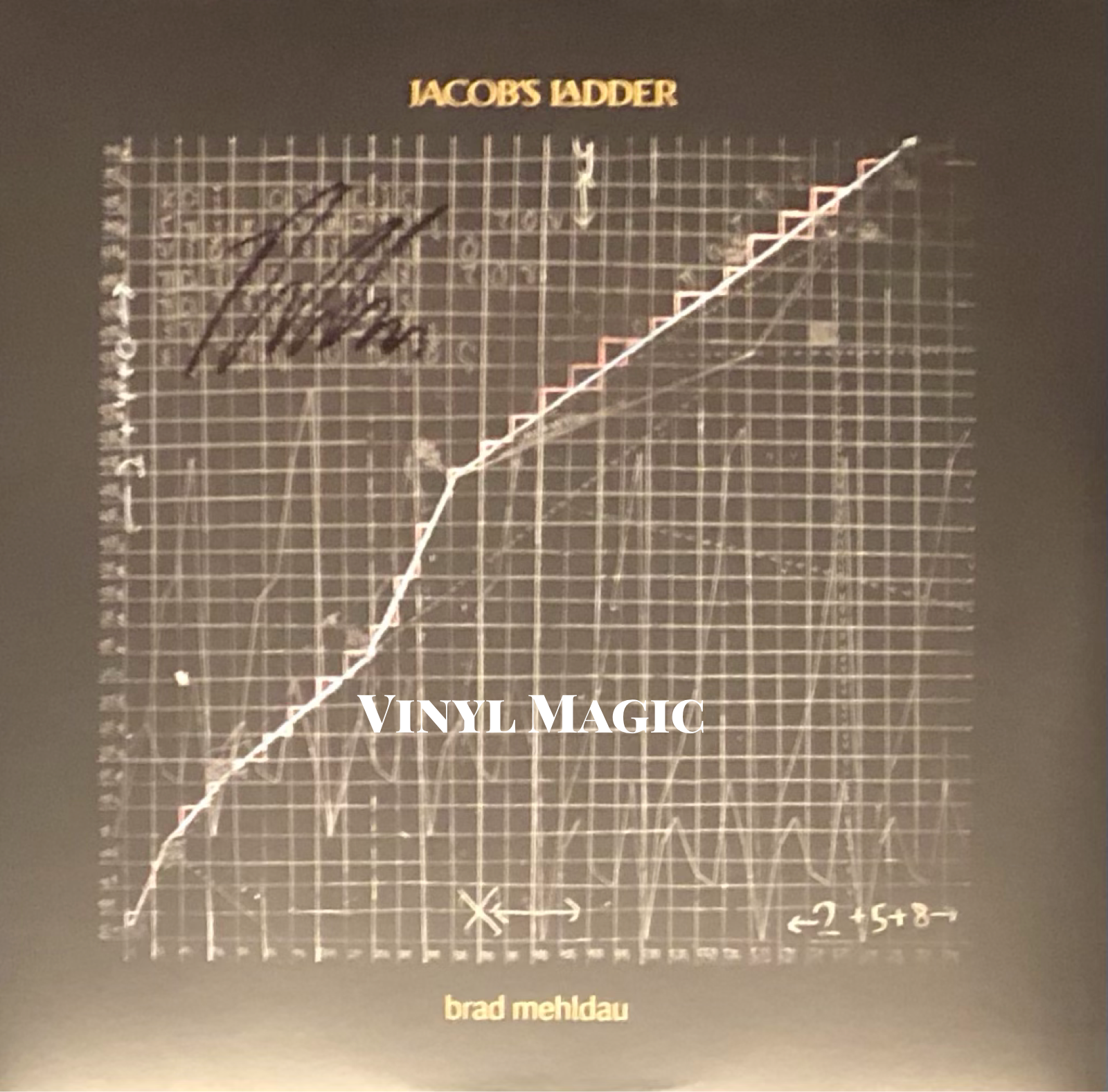Bob Brookmeyer, The Valve Trombone and Me…
It was alright, especially when we played college dates. The last two hours would always be one long dance medley. You'd play that session, smoke a little dope and it was dark, so everything was comfortable. I think (arranger/composer) Gil Evans wrote some things for the band that were pretty complex. Claude Thornhill was very proud of that band. I remember him sitting with some people at a hotel. He asked me to play "Snowfall," the band's theme. Then he'd tell his friends, "How about that? I got two for the price of one. He plays my theme and writes some arrangements." When we were on the road, if Claude wanted to leave early, I'd also play the piano.
Bob Brookmeyer, early beginnings with Claude Thornhill
Jazz Is A Kick (1960) signed by Bob, Curtis Fuller, Hank Jones
When Gerry (Mulligan) sat down at the piano, my toes would curl in a bad way. He had a touch like a rocket propelled grenade. He wasn't a piano player, his hands weren't made for it. He was an arranger's piano player, someone who used the piano to write, not play. I studied piano for three years and had a sense of how it's supposed to go... One time, we were working opposite Art Tatum in New Jersey. We were there for a weekend. I had never been around Art Tatum before, so I'm sitting in the back, and the crowd is watching and listening intently. When Tatum finished his set, I said to myself. 'Gerry will never play piano with Art Tatum here.' Well, as soon as Tatum got up, Gerry went over to the piano and sat down. That took some nerve... On the next set, Gerry said, "Go on, go play the piano." So I went over and sat down. I was amazed. The piano worked so beautifully after Tatum had played it. He was such a strong player that he had warmed up the keys and action. The piano played beautifully. Just the power of Tatum's artistry and humanity and whatever else he laid on it was beautiful. Heck, even Gerry sounded good on that instrument.
Bob Brookmeyer on the great baritone saxophonist Gerry Mulligan and the even greater pianist Art Tatum
Paris Concert (1954) signed by Bob
It was Jack Lewis' idea. Jack was an eccentric producer at United Artists who had interesting ideas. It was supposed to be a quartet date, or at least, I thought it was. I showed up at the studio with my horn, but when I walked into the studio, I saw two pianos pushing together, facing each other. Jack had heard Bill and me do a four-hand thing at an earlier United Artists record date and wanted to try it out for the record. I knew Bill well. We had spent a lot of time together socially, so we were close... So for Bill and me, it was just two friends who got dumped into a crazy idea. We looked at each other when Jack told us what he had in mind, and we said, "Hey, why not?" We sat down and played "I Got Rhythm" and it sounded pretty good, so we kept going. There was no advanced planning, no playlist. We just walked in that day and (drummer) Connie Kay and (bassist) Percy Heath were waiting for us. Toward the end of his life, Bill told me it was one of the greatest things he had done. At the session, I just tried to hang on. We both had a good time doing it, and I did my best to make up for my lack of technique compared to Bill's.
Bob Brookmeyer on The Ivory Hunters, a 1959 piano duet with the incomparable Bill Evans
Gingerbread Men (1966) signed by Bob, Clark Terry, Hank Jones
The harmony that Bob and I had was super. I was digging the valve trombone that Bob played because that was the first instrument I was given in high school. But the way its sound married with my flugelhorn sound was something special. We could feel each other's next moves and enjoyed the way we managed to play simultaneously throughout the changes. We called it "noodling." Usually one player wants to outshine the other, but we had a way of blending together that allowed both of us to shine. We really tried to make each other sound beautiful.
Clark Terry playing with Bob Brookmeyer 1961-1966
Previously Unreleased Recordings (1973) signed by Bob, Clark, Roger Kellaway
The subtlety, energy and enthusiasm required is what it's all about. I was a conductor destroyer until I started studying the nuances and technique. A conductor is everything. You know as soon as a conductor walks in front of a band or orchestra whether or not that person is going to be good. I always wanted to be a good conductor. At the time, I didn't want to study composition, I just needed a conductor who could just give me the feel and technique.
Bob Brookmeyer studying with Earle Brown, contemporary classical composer
7 x Wilder (1961) signed by Bob
Ralph Burns, the credited arranger, wrote one chart for the album (The Genius Of Soul) and got so drunk for some reason, he couldn't finish the job. It was a string date, so copyist Emile Charlap's office called Manny Album, Al Cohn and me to finish the album. We were all there working through the night to get the charts done and copied in time for the date, which was the next day. I arranged "Just For A Thrill" and "You Won't Let Me Go." Ralph wrote "Am I Blue" and then called Al Cohn and me to finish the album (The Genius Hits The Road). Ralph liked Ray's music so much that he'd listen to it and think too much and freeze up. I think the music was too powerful for him, too emotional. Ray was coming from the center of the earth with those songs. I think they hit Ralph hard which made arranging them harder and slower... Al Cohn arranged "Georgia On My Mind" and a bunch of others, and I arranged "Moonlight In Vermont," "Basin Street Blues," "Mississippi Mud," "Chattanooga Choo Choo," "Deep In The Heart Of Texas," "Alabamy Bound," and "New York's My Home."Bob Brookmeyer, uncredited arranger for Ray Charles 1959-1960
The Dual Role Of Bob Brookmeyer (1955) signed by Bob
Arranger, composer, educator, pianist and valve trombonist, Bob Brookmeyer lived a rich and full life, and he left an enduring legacy of music. He released more than thirty-five albums as a leader and participated as a sideman on hundreds of sessions with Chet Baker, Ray Charles, Bill Evans, Stan Getz, Gerry Mulligan and so many others. There simply aren't any who played piano duets with Bill Evans, arranged modern country songs with Ray Charles, taught classes at the New England Conservatory Of Music, incorporated contemporary classical music techniques in jazz compositions, and studied conducting with influential and innovative American classical composer Earle Brown. Yes, Bob Brookmeyer was one of a kind.
Born in 1929 in Kansas City, Missouri, Bob was a precocious only child. His family was not affluent, as he described in an extensive 2009 interview with Marc Myers, "When I was very young, we were pretty poor. We were so poor we lived with other people. Eventually, we moved to a better area and I went to a better school. From then on, my life improved. We rented our first house. It was furnished. I remember when we moved in, I went down to the basement and found a doctor's bag. When I opened it, I saw all these pills, My parents came down just as I was looking at them and brought down the hammer fast. But I clearly had an early fascination with drugs, they were really pretty." This early glimpse into Bob's psyche is revealing, but let's not get ahead of his story!
His early school experiences were daunting, as Bob remembered, "I wasn't a delighted child, that's for sure. Grade school was a nightmare for me, there were bad teachers and bad kids. I was an only child and rather antisocial, so I was bullied quite a bit. My folks were loving but it was hard to get over the nightmare I would face at school every day. You couldn't escape it. I'd walk into the gym and someone standing there would hit me in the stomach as hard as he could..." So Bob found solace in music, an outlet which didn't disappoint, "Grade school wasn't happening, friends weren't happening, sports wasn't it. Music was the first thing in my life that made sense and gave me self worth. It filled the hole and I jumped at music with enormous passion and focus."
Portrait Of The Artist (1960) signed by Bob
Bob's talents as a pianist and writer of charts developed quickly, "I was already playing with dance bands and I sort of knew how harmony went. So at age fourteen, I was writing for a professional dance band. The first chart I ever brought in was ‘Do You Ever Think Of Me?’ and it worked out ok. From that point on, I had a contact in Omaha who would order the arrangements." Bob was paid the princely sum of $15 for each arrangement, a rich remuneration for a fourteen year old in 1943 while World War II raged on. As a result, his high school experience was much improved, "I became a member of clubs and was well known as a kid musician. I was playing professionally by that point. The high school bandleader, to his dying day, would shudder at the sound of my name. I was more advanced than most professionals then. He'd call for a band rehearsal and I'd have to tell him that I couldn't make it because I had a recording date."
Initially, Bob played piano in big bands led by Tex Beneke and Ray McKinley. When he joined the Claude Thornhill orchestra in the early 1950s, Bob switched to the valve trombone, a move which brought some trepidation, as he recalled, "Who likes the slide trombone? Sax players got all the girls because they were seated in the front row. Trumpeters got all the money because they were driving the band from the back row. Trombones sit in the middle and develop an interior life. Trombonists didn't get the money or the girls." The valve trombone is different from the slide trombone as it is played like a trumpet with three valves, rather than using the glissando of the slide. Although jazz luminaries Al Grey, Slide Hampton and J.J. Johnson used the slide trombone to great effect in jazz, and Giuseppe Verdi used the valve trombone in his classical pieces, Bob Brookmeyer became the most accomplished jazz practitioner.
Notwithstanding his misgivings within the orchestra pecking order, Bob joined Thornhill's band as a valve trombonist/pianist. He disliked the travails of life on the road, "Playing wasn't bad but the road was grueling. Claude's band in the early 50s was a hard drinking band. You had to drink given the pace. There were times on the road when we didn't check into a hotel for six days. You just rode the bus from gig to gig to gig. Buses didn't have toilets then and the food on the road was terrible. When we traveled, we had two groups on the bus - one who would sleep while the other was up semi-loaded and talking. Then, the guys who were sleeping would get up and the others would go to sleep. It was pretty rough."
The Clark Terry-Bobby Brookmeyer Quintet (1965) signed by Bob, Clark Terry, Roger Kellaway
The road was wearying and after successful stints with Gerry Mulligan, Stan Getz, and Clark Terry, Bob moved to Los Angeles, and he settled into studio work, composing for movies as well as enduring a particularly unsatisfying gig with Merv Griffin's television show studio band in the 1960s, "...the worst thing I ever did in my life. It was terrible. The band was good but had nothing to do. We had a bad bandleader. Once again, I used my cleverness and hatred to cause trouble. My name was well known among musicians at this point, but I disliked the lack of adventurous creative thinking in the band. So I did things to cause trouble. For instance, I'd make believe I couldn't read the charts. I'd put on my glasses and look studiously at the part, telling them, "I'll get it, I'll get it." I made quite a reputation for being an asshole, that's the way I survived." Certainly, it didn't help that Bob was in the throes of his alcoholism, a dark descent which he was able to overcome nearly a decade later.
Bob later reflected on his addiction and recovery years later, "I divide my life into two parts - the drinking part and the sober part. Actually, sober is a terrible word to use since I'm loonier now than I ever was... I have a great memory, I clearly remember being a drunk. I had an amazing capacity for alcohol, and I was great at appearing sober. I used to drink a couple of fifths of scotch a day along with wine and drinks with dinner. After a while, I couldn't depend on alcohol. It wouldn't work." After several fits and starts, Bob got sober in 1977 and he remained sober until he passed away in 2011.
Bob Brookmeyer featuring John Williams & Red Mitchell (1963) signed by Bob, mustache added by Bob
In the late 1990s, I saw Bob Brookmeyer perform at the Village Vanguard in New York City. It was quite a thrill as his performances were rare. He played the valve trombone with skill and precision, although, for me, it was unusual to see the trombone played so beautifully without the slide moving up and down. Such is the inherent nature and workings of the valve trombone. After the show, I had a stack of vinyl for Bob to sign. He was very gracious as he signed the Clark Terry records, "I loved playing with Clark, we had a lot of fun together." When he signed Bob Brookmeyer featuring John Williams & Red Mitchell, he couldn't resist adding a Snidely Whiplash moustache, "There," he said with a mischievous grin, "That looks much better!" I thanked Bob for his time and especially his music.
Bob Brookmeyer left a lasting impact with his music and all the students he helped through the years. His words from the liner notes to 7x Wilder ring true, "Jazz is a personal expression. A jazzman should be saying what he feels. He's one human being talking to others, telling his story - and that means humor and sadness, joy, all the things that humans have. You tell it freely and honestly, and sometimes you don't make it. It's a matter of percentages, like telling a joke that no one laughs at. But you tell it, whatever it is and it's yours. That's you, that's human, that's jazz."
Thank you Bob, you were, and will always be, a master musician and storyteller.
Through A Looking Glass (1981) signed by Bob
Choice Bob Brookmeyer Cuts (per BKs request)
https://www.youtube.com/watch?v=7DCQVyD3whM
“Open Country” live with Gerry Mulligan Quartet 1962
https://www.youtube.com/watch?v=5wKLBLgkSBk
“Straight No Chaser” live with Clark Terry 1965
https://www.youtube.com/watch?v=IC82SBym4Kg&list=PL0q2VleZJVEkRdSAceJLuBxvhYMUStdd3
“As Time Goes By” The Ivory Hunters with Bill Evans 1959
https://www.youtube.com/watch?v=ore4UO6MiME
“Smoke Gets In Your Eyes” The Bob Brookmeyer Quartet 1960
https://www.youtube.com/watch?v=URklmhMVof8
“Things I Love” Jazz Is A Kick 1960
https://www.youtube.com/watch?v=h-Jm8dGf6UA&list=PLI3QsU_sOlWvACA4pROB6IP2SSg4agYXu
“Walkin’ Shoes” Paris Concert with Gerry Mulligan 1955
https://www.youtube.com/watch?v=Rj-_nqyZiMc
“Misty” Bob Brookmeyer and Friends 1964
https://www.youtube.com/watch?v=dcO7kvgugnE
“My Funny Valentine” Live At North Sea Jazz Festival with Jim Hall 1979
https://www.youtube.com/watch?v=8_TACm-37K0
“Hello & Goodbye” Live at The Village Vanguard with Mel Lewis, Clark Terry
https://www.youtube.com/watch?v=b1T_kp3EzNw
“Hum” live with Clark Terry 1965






